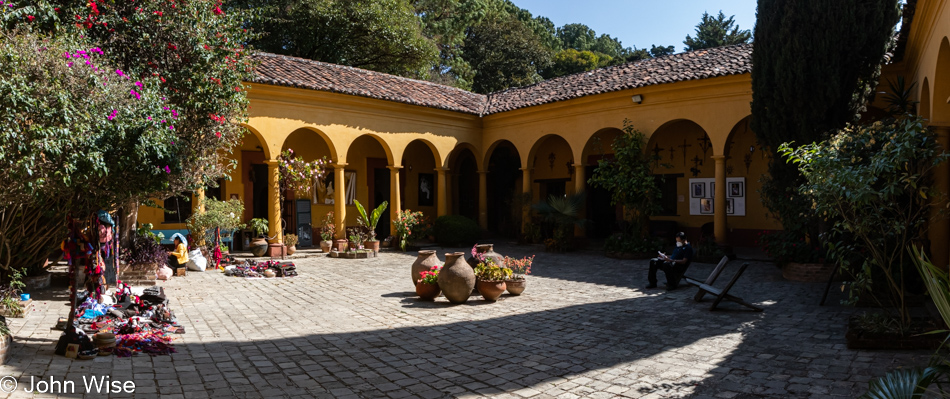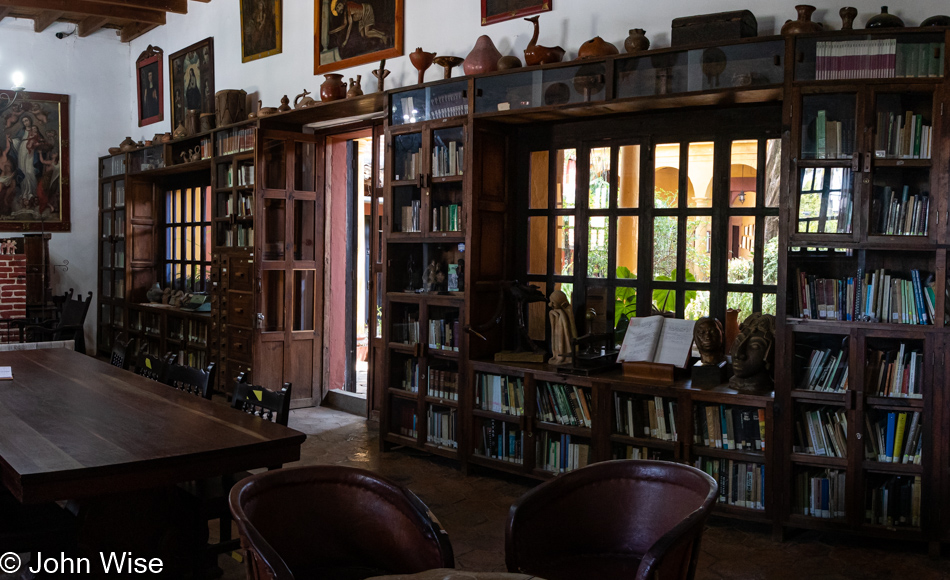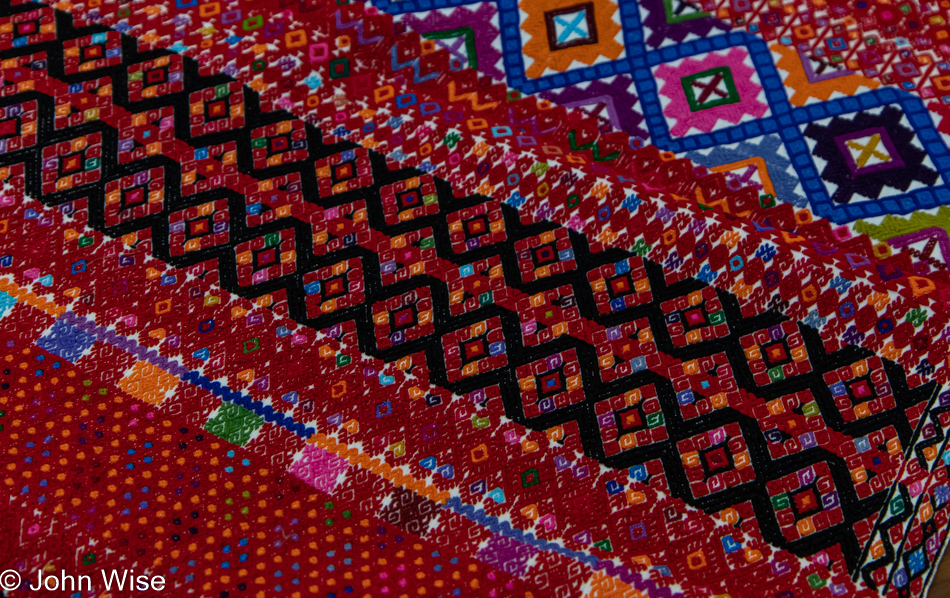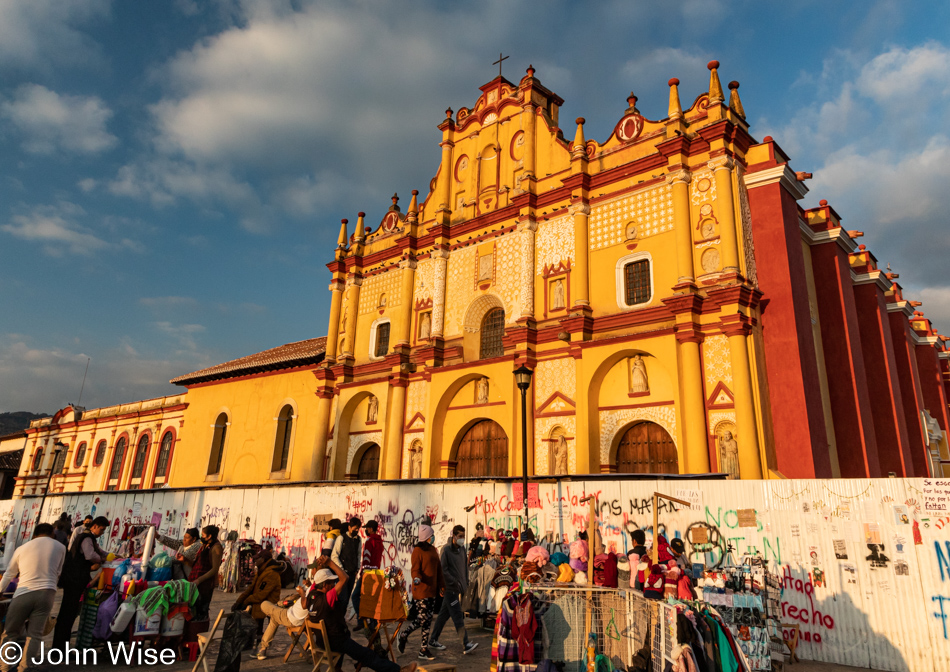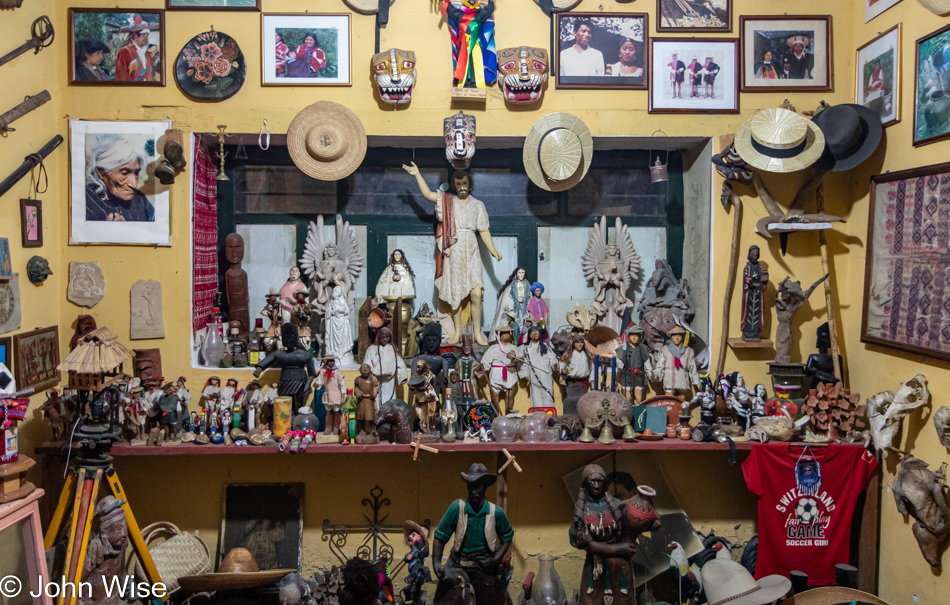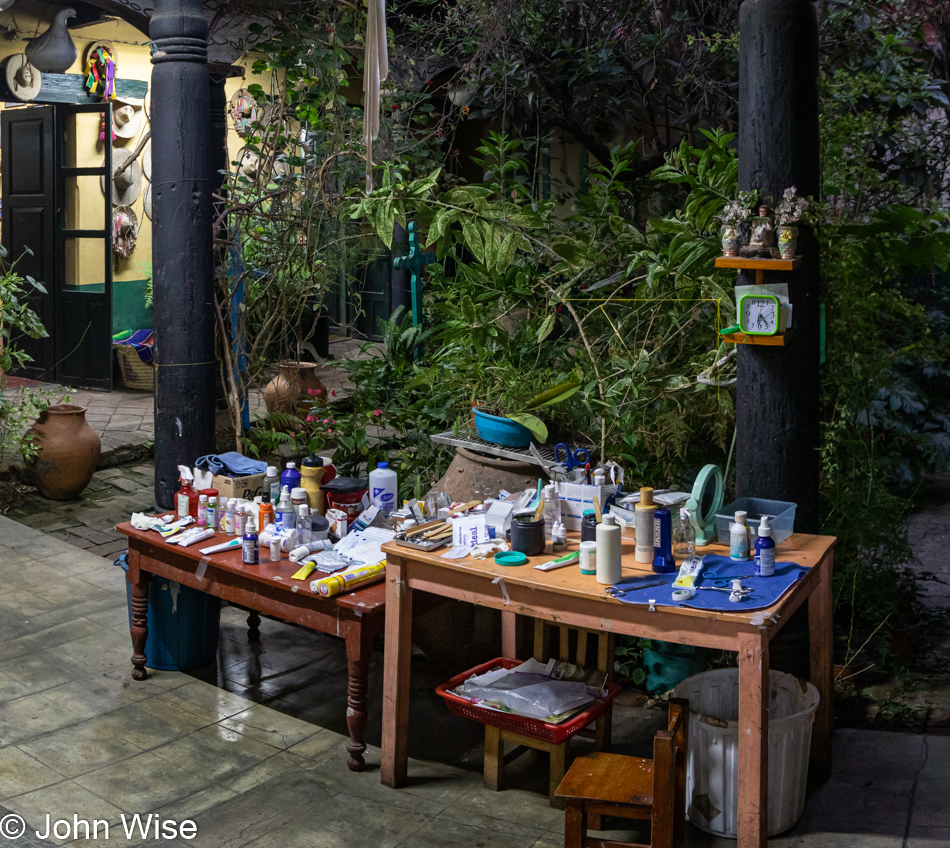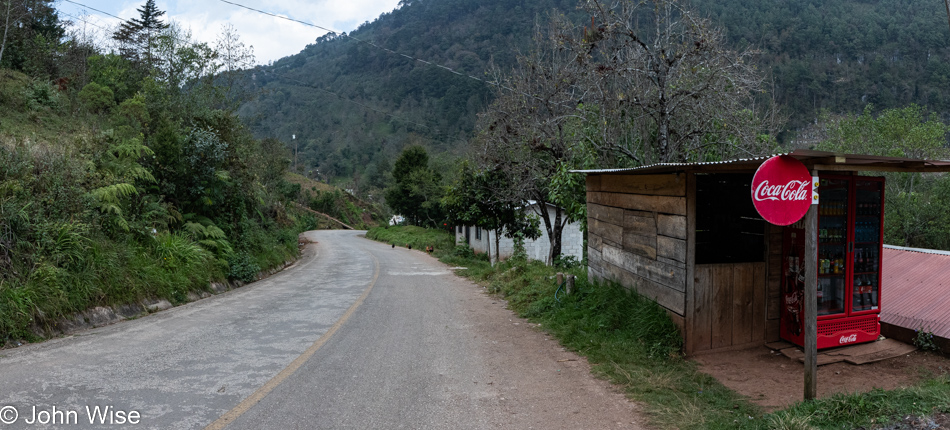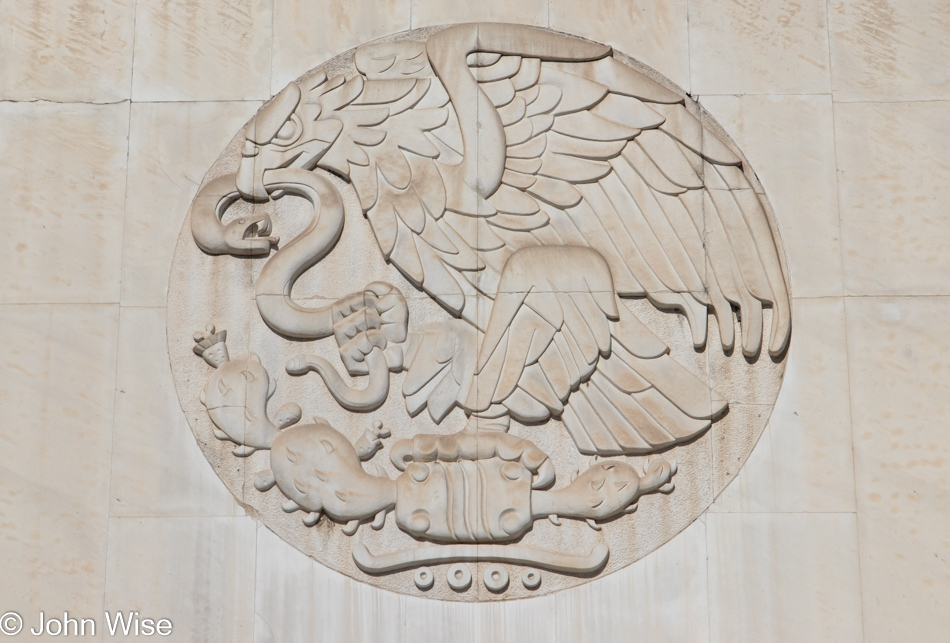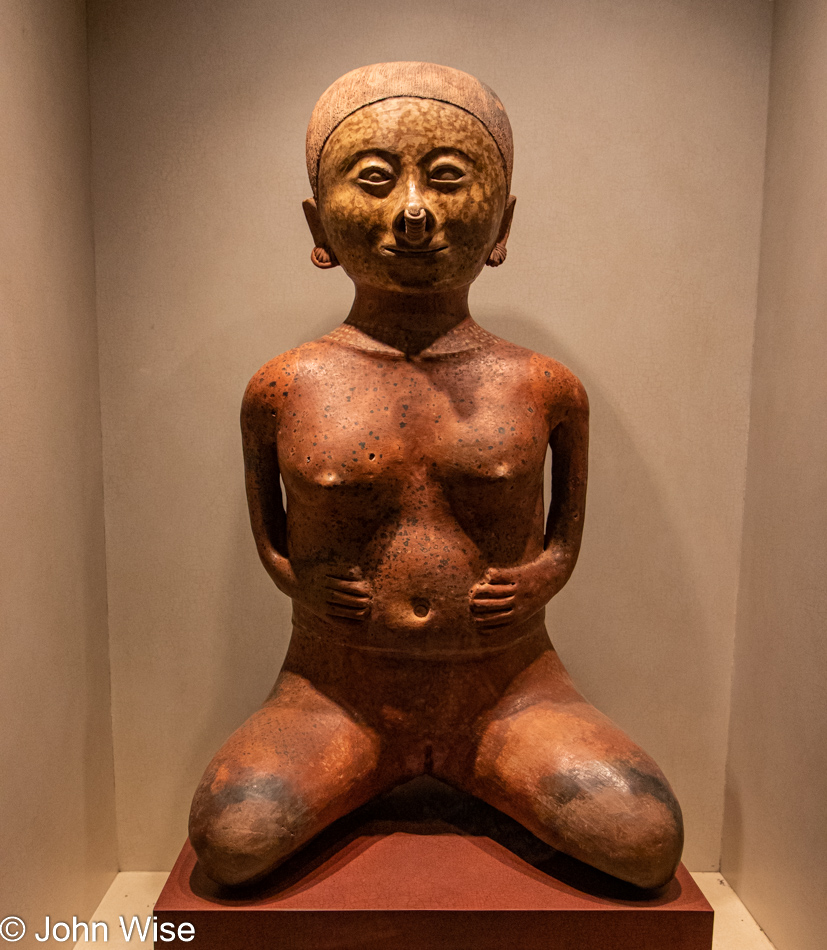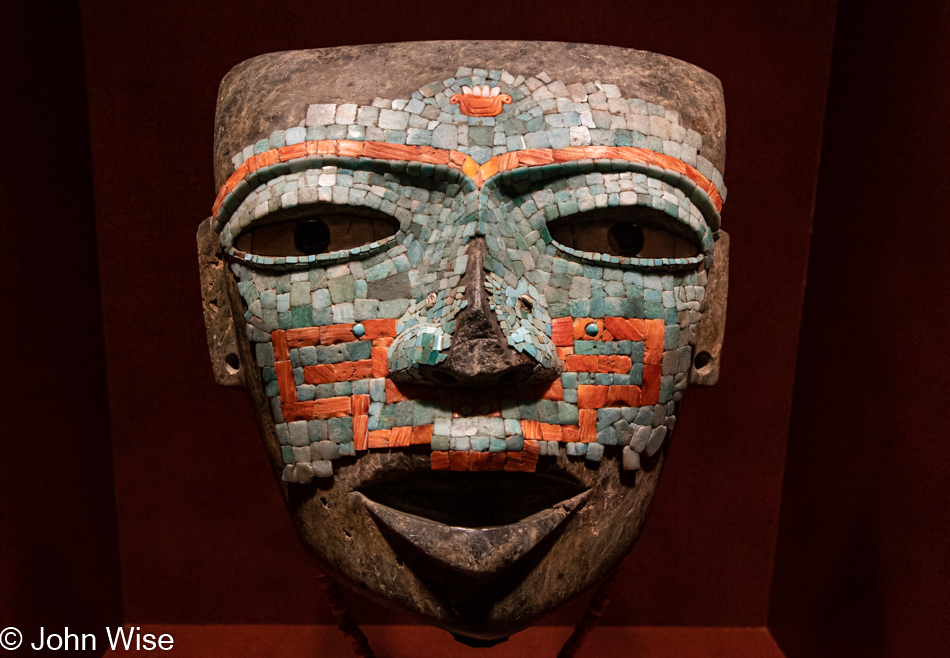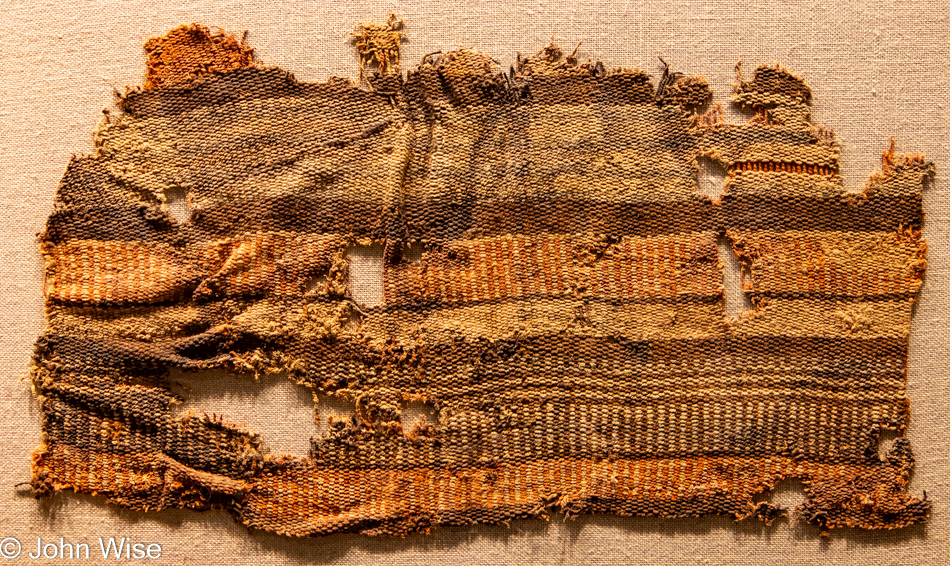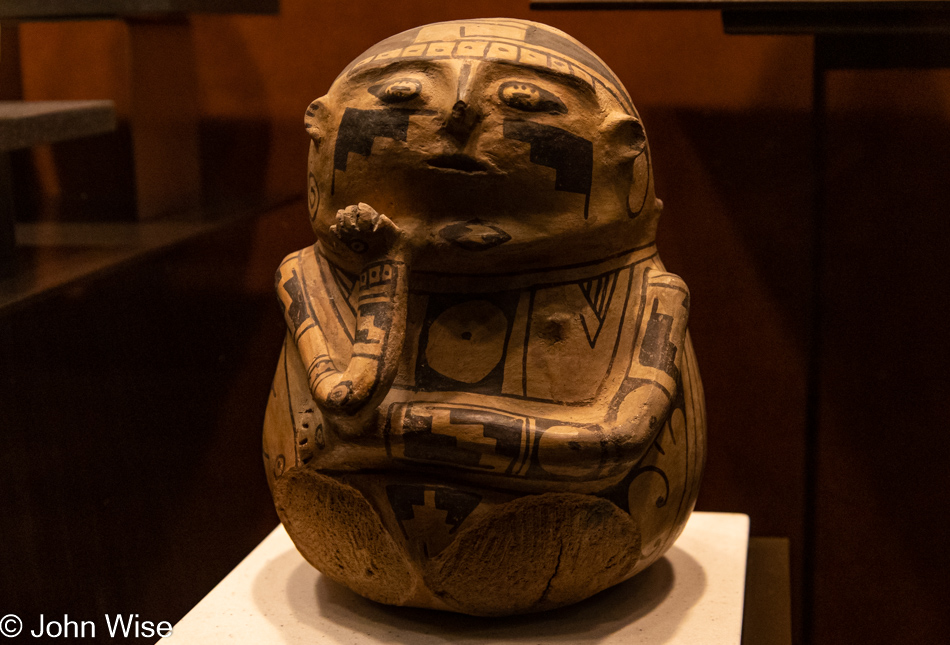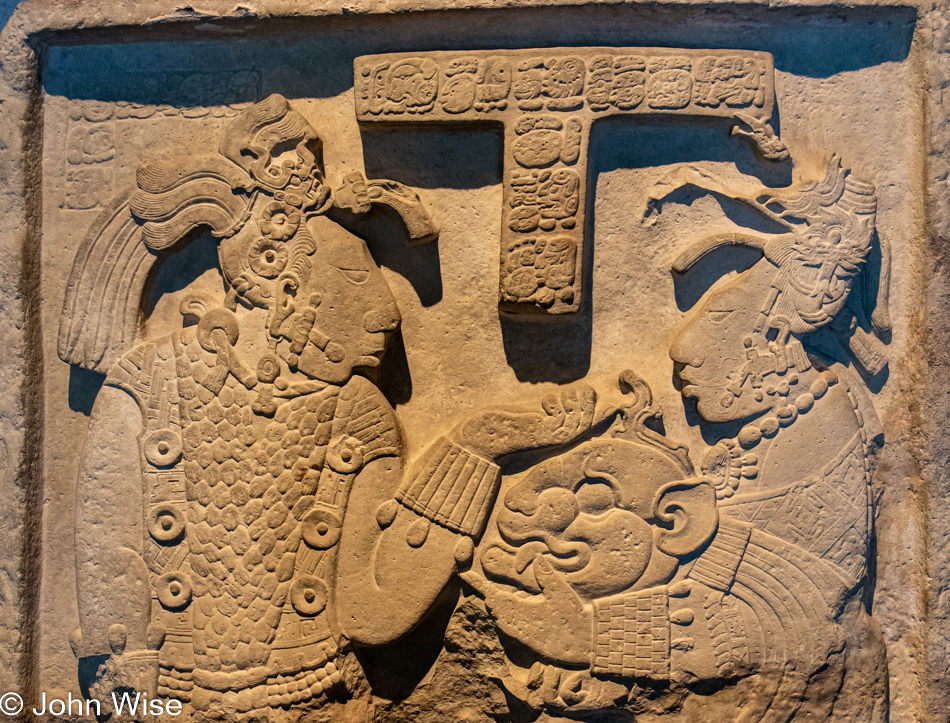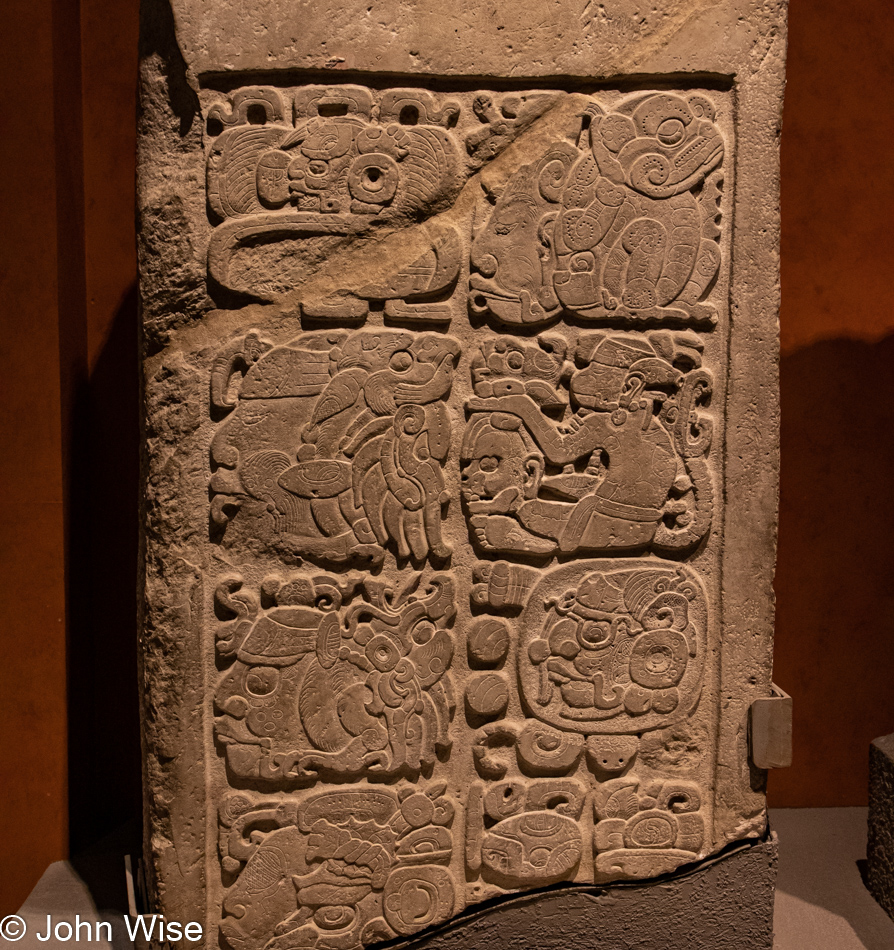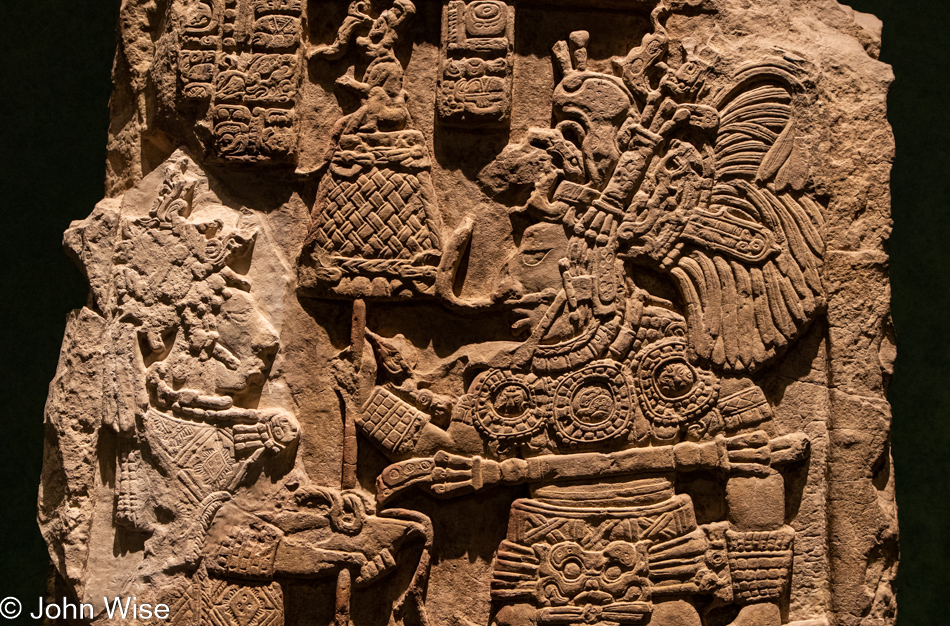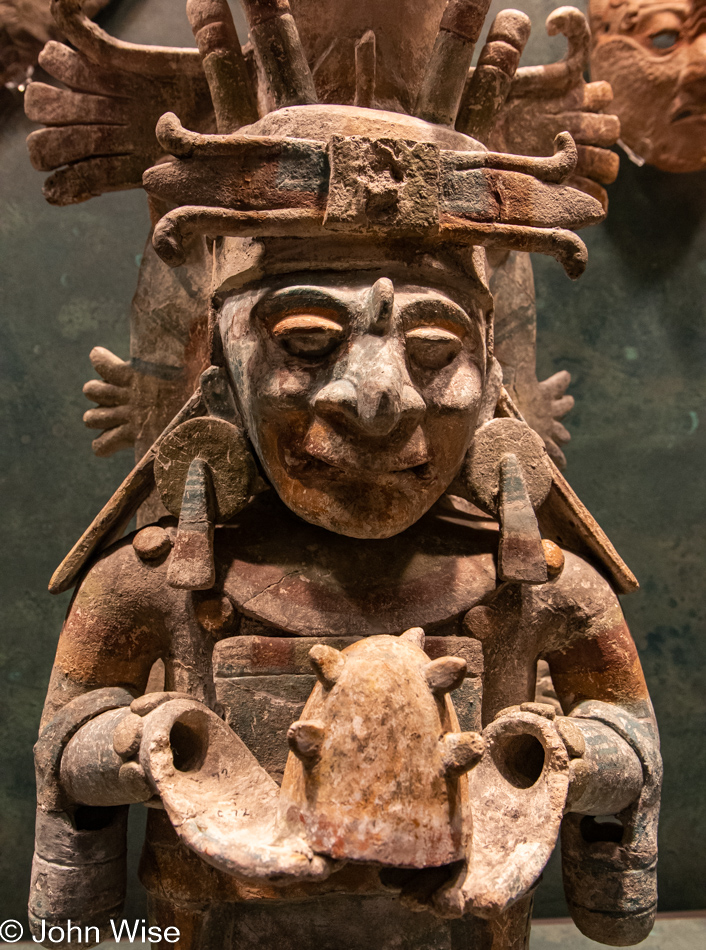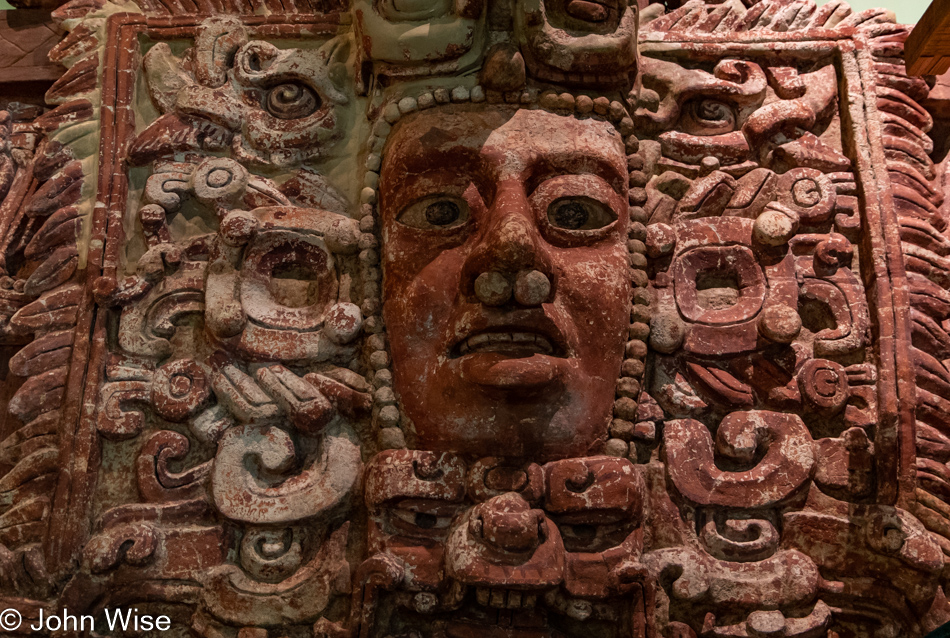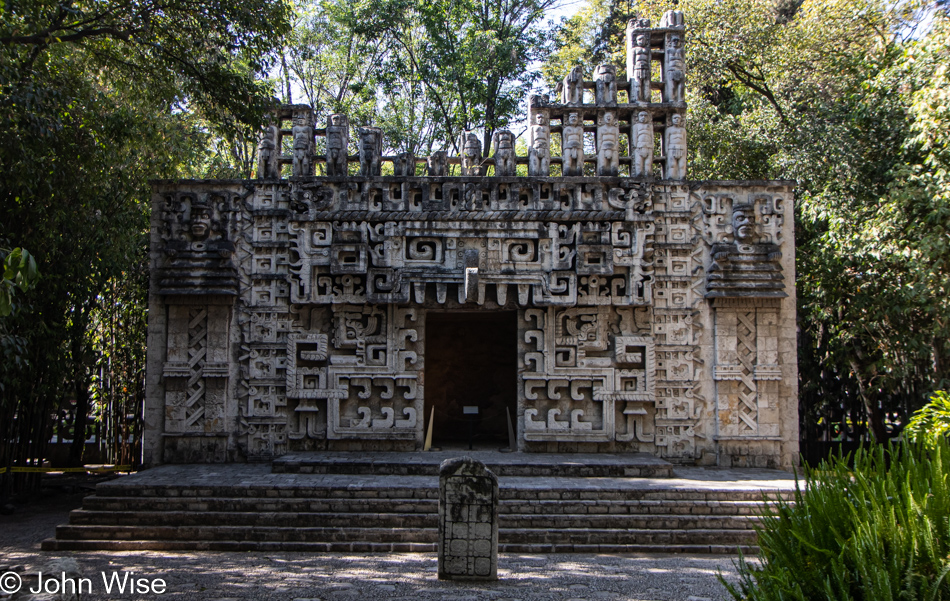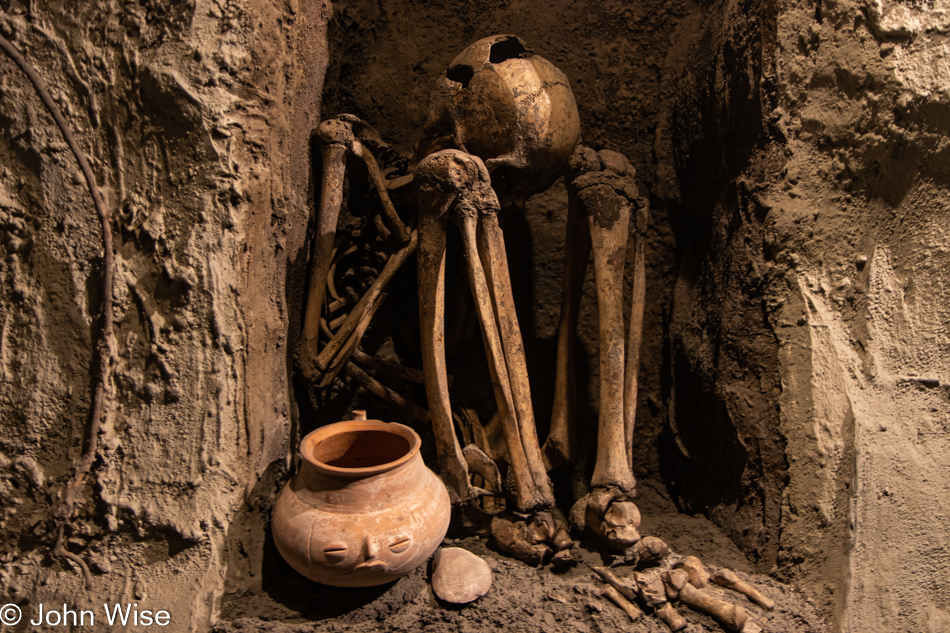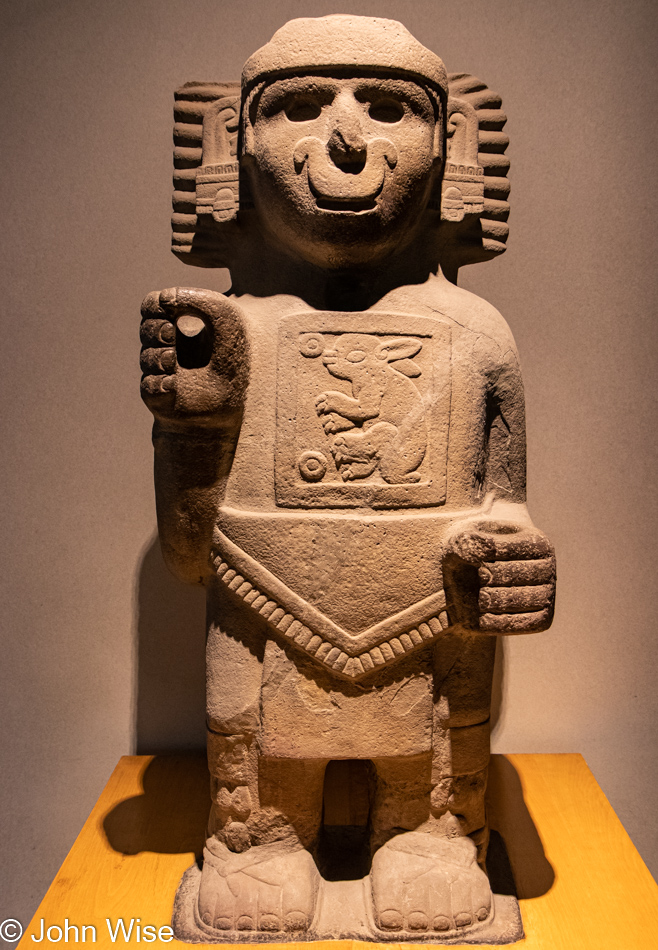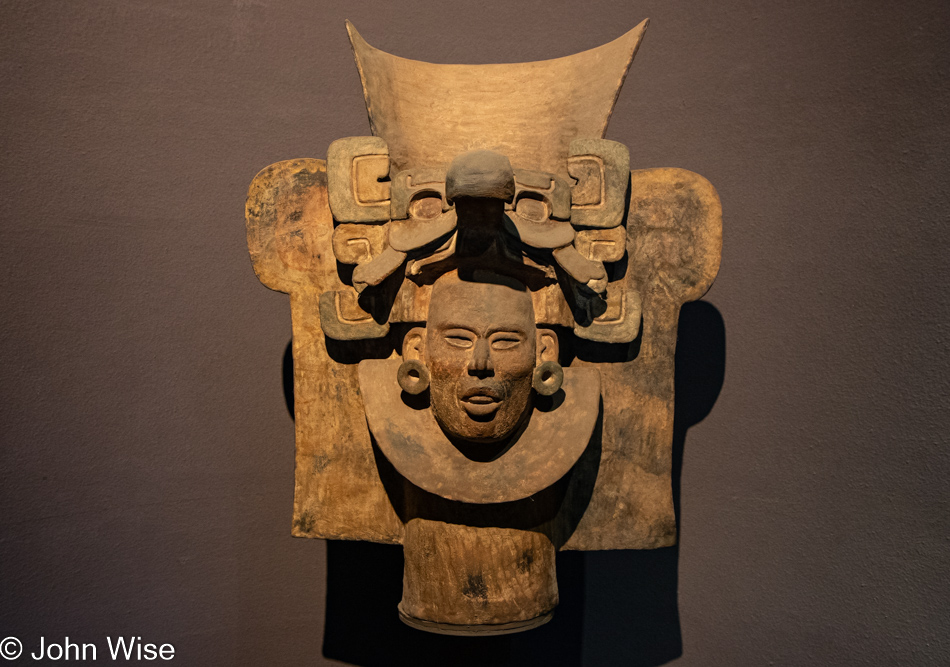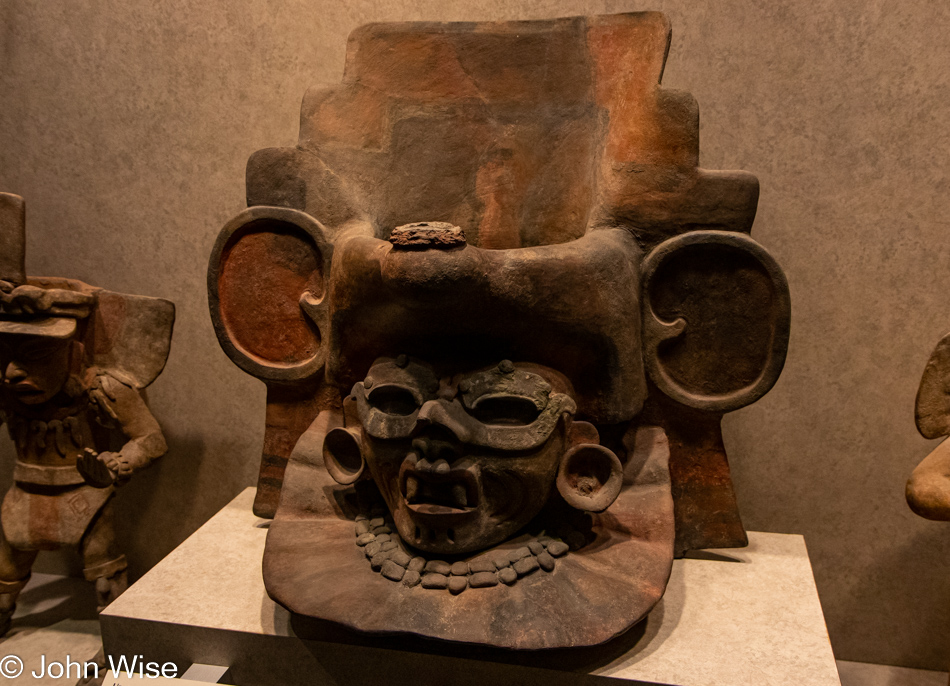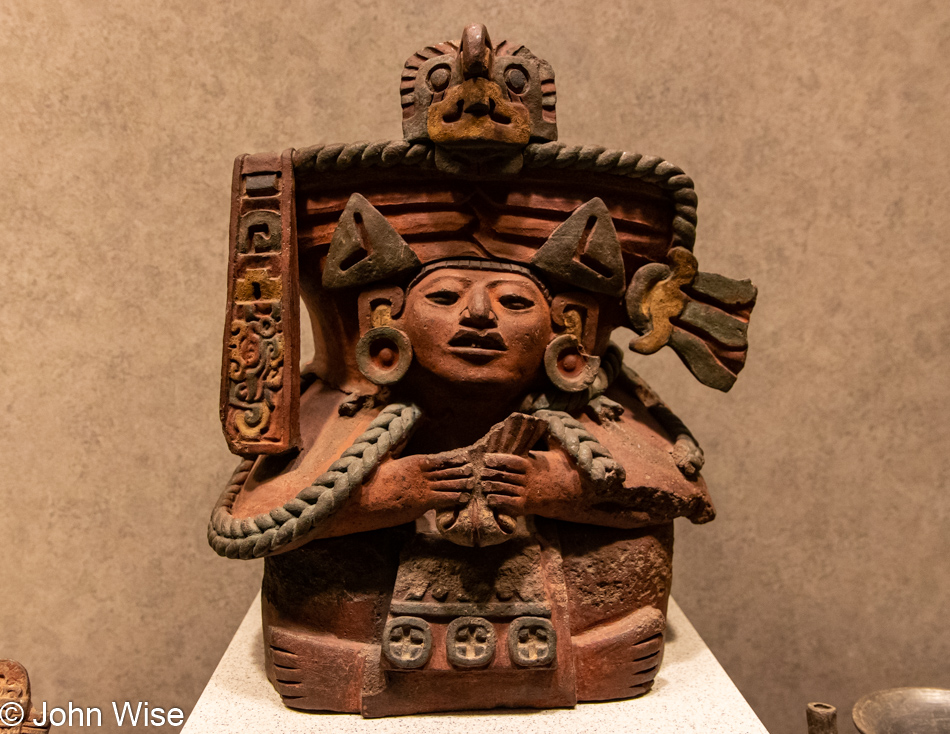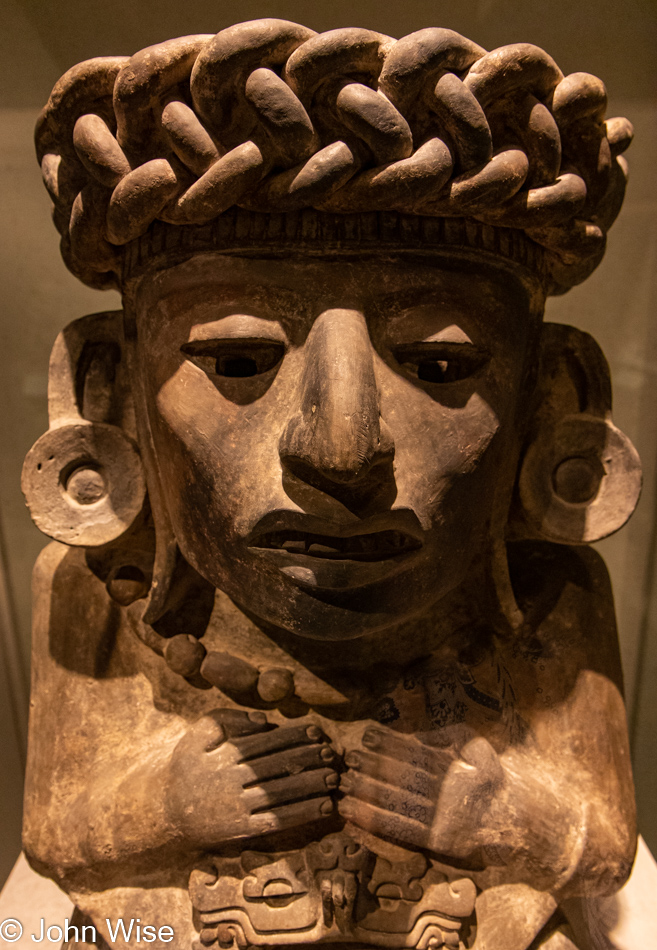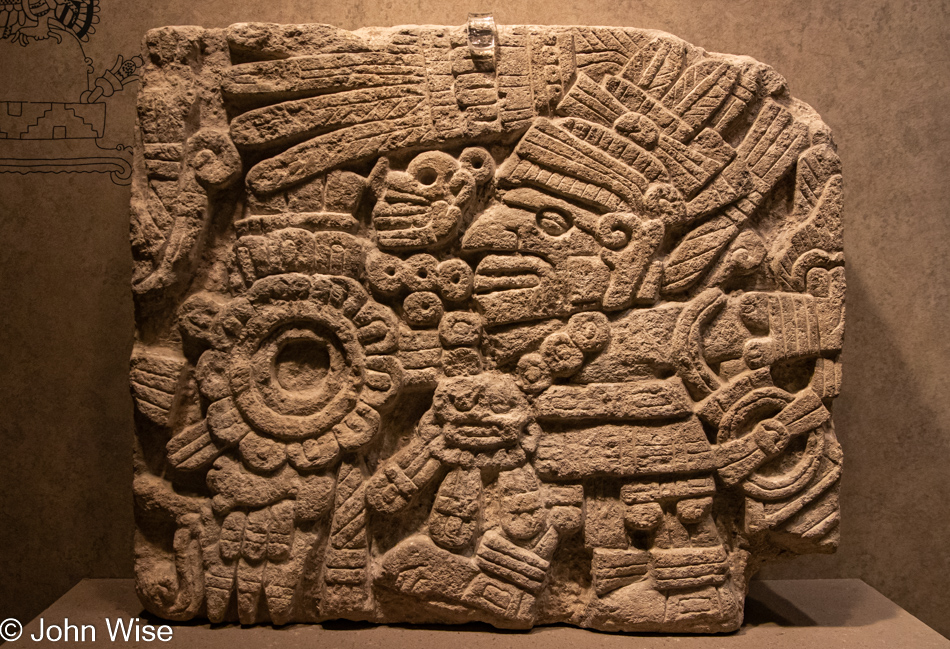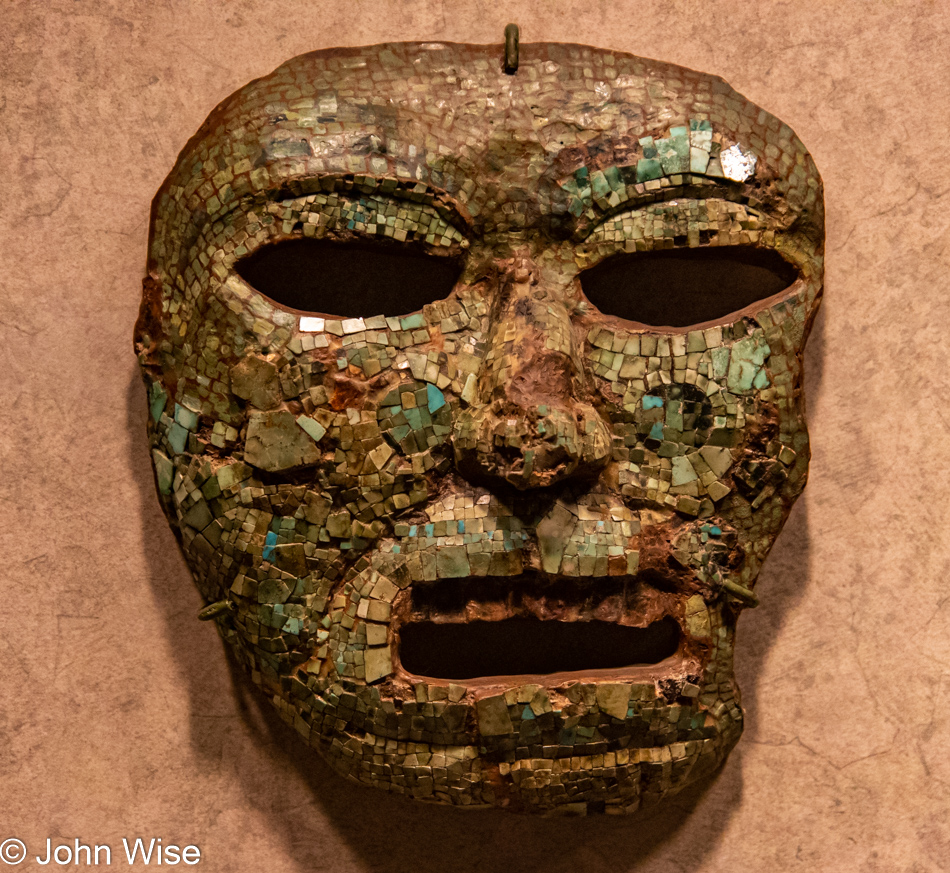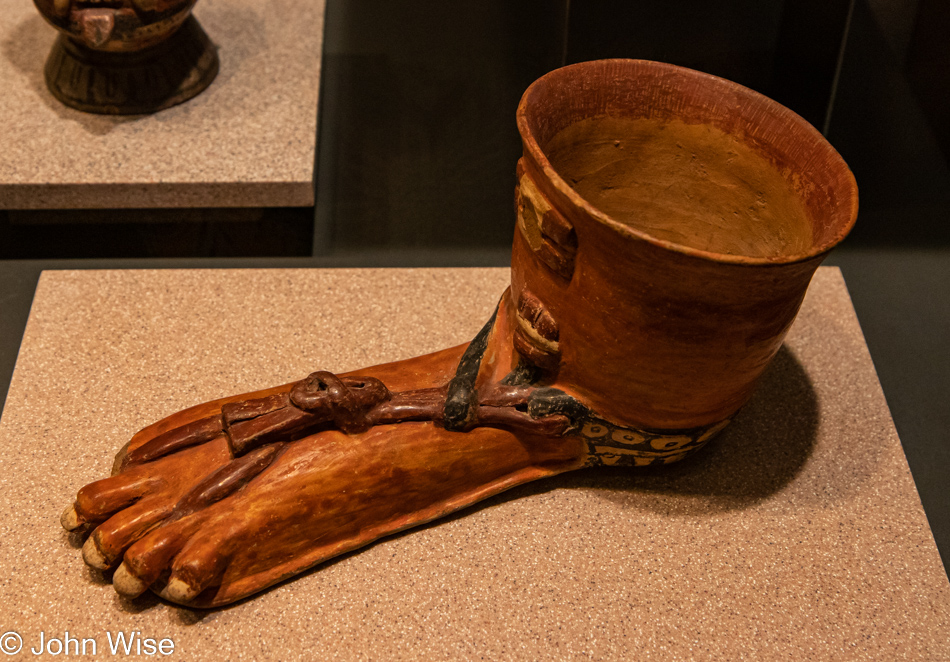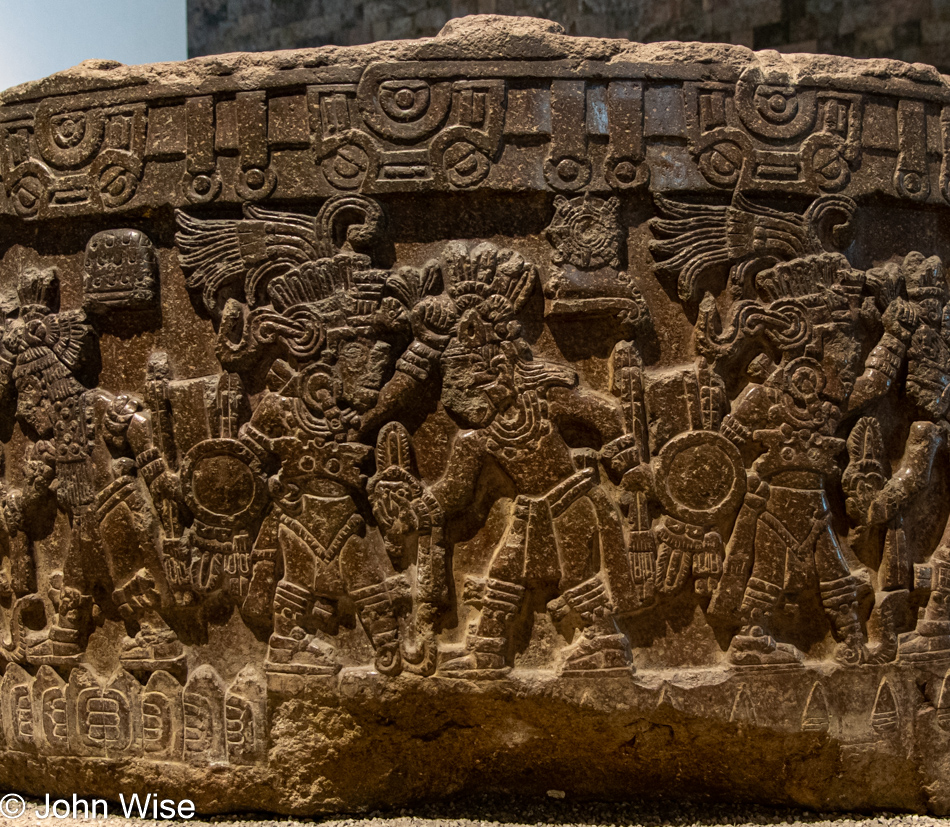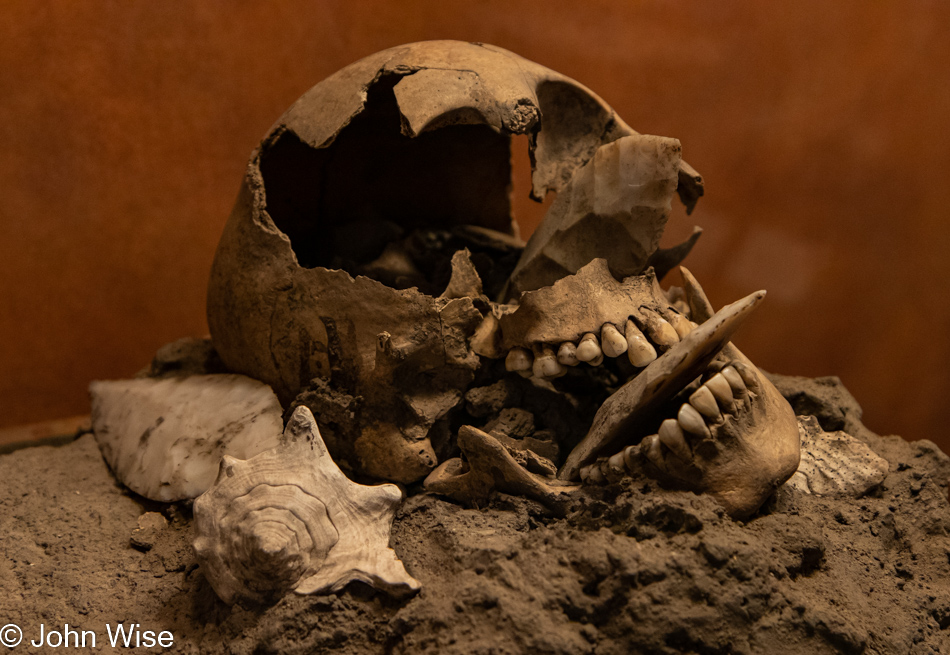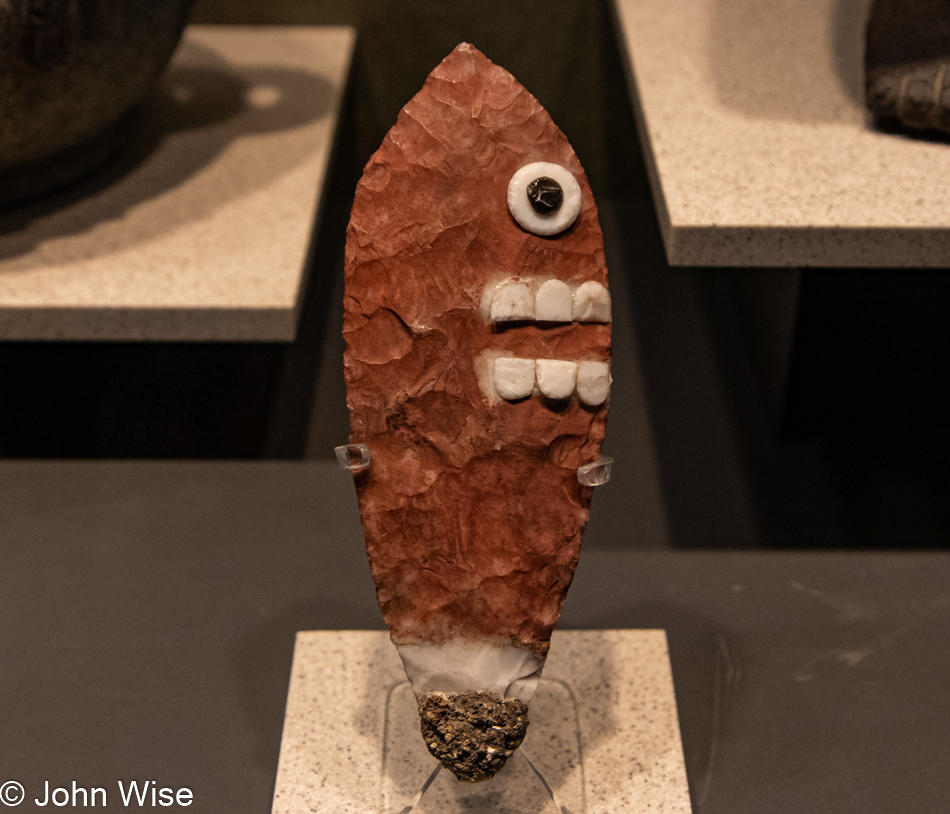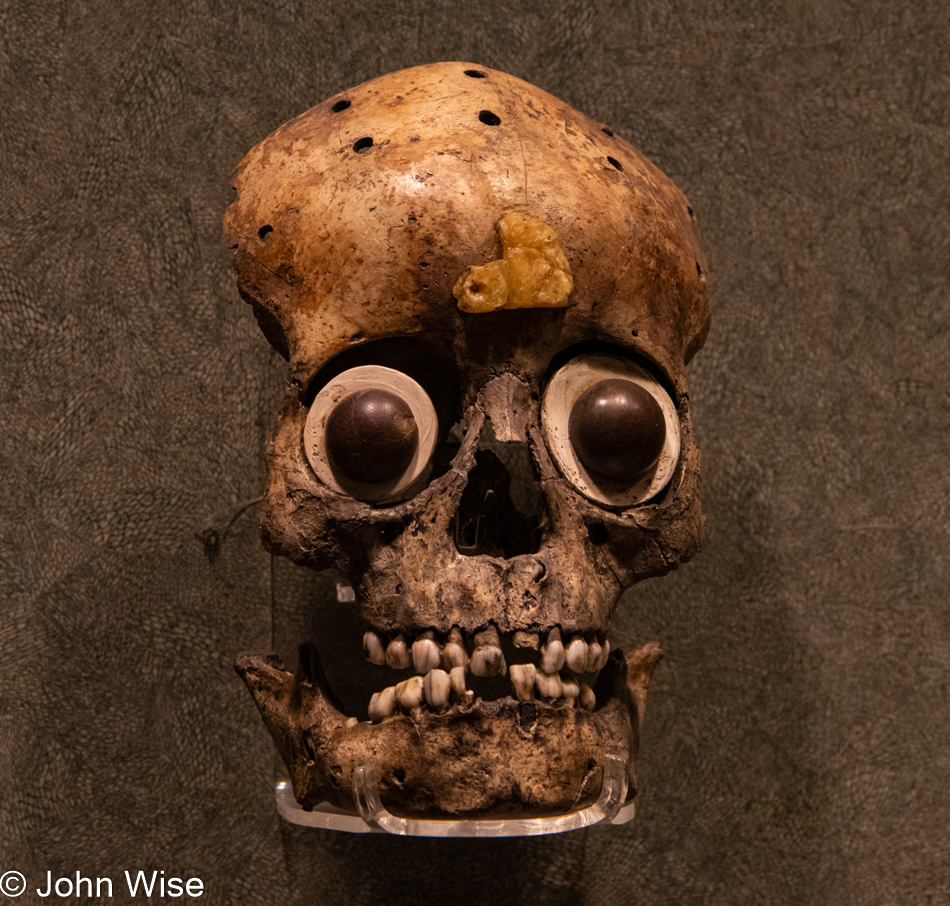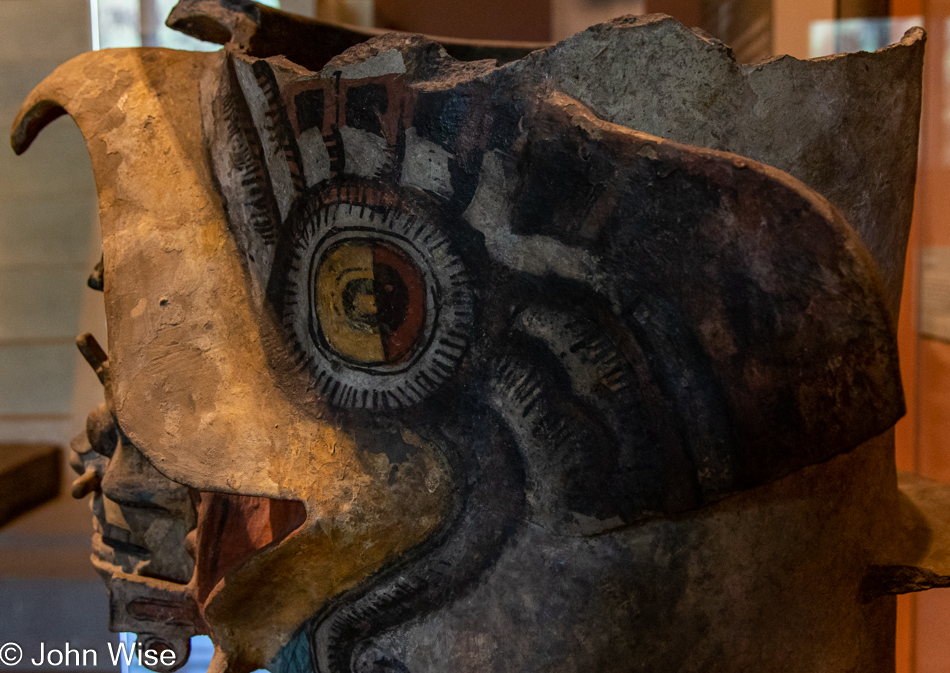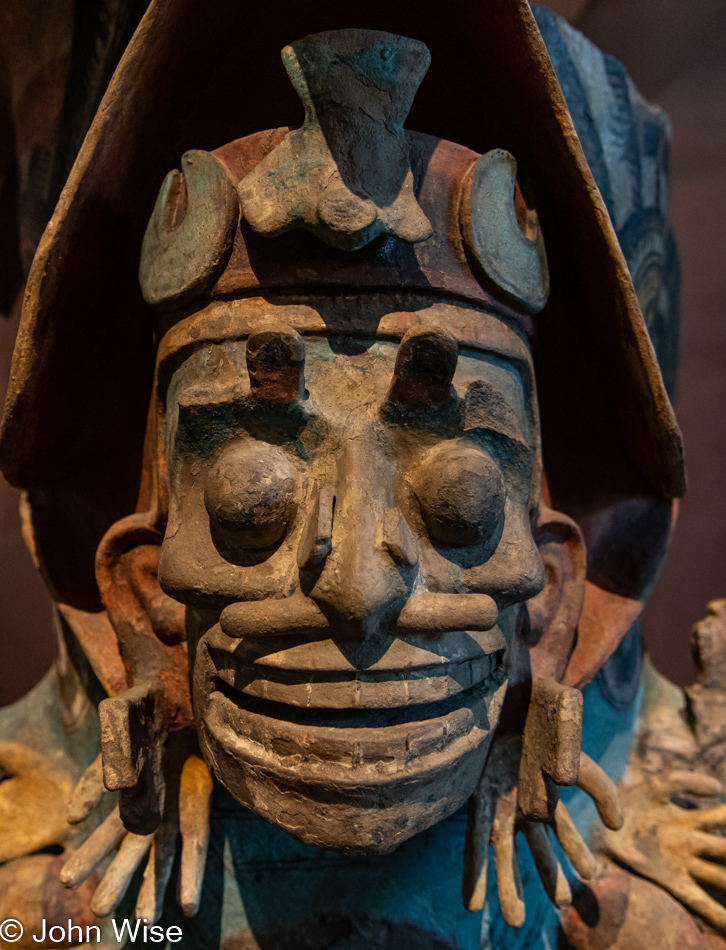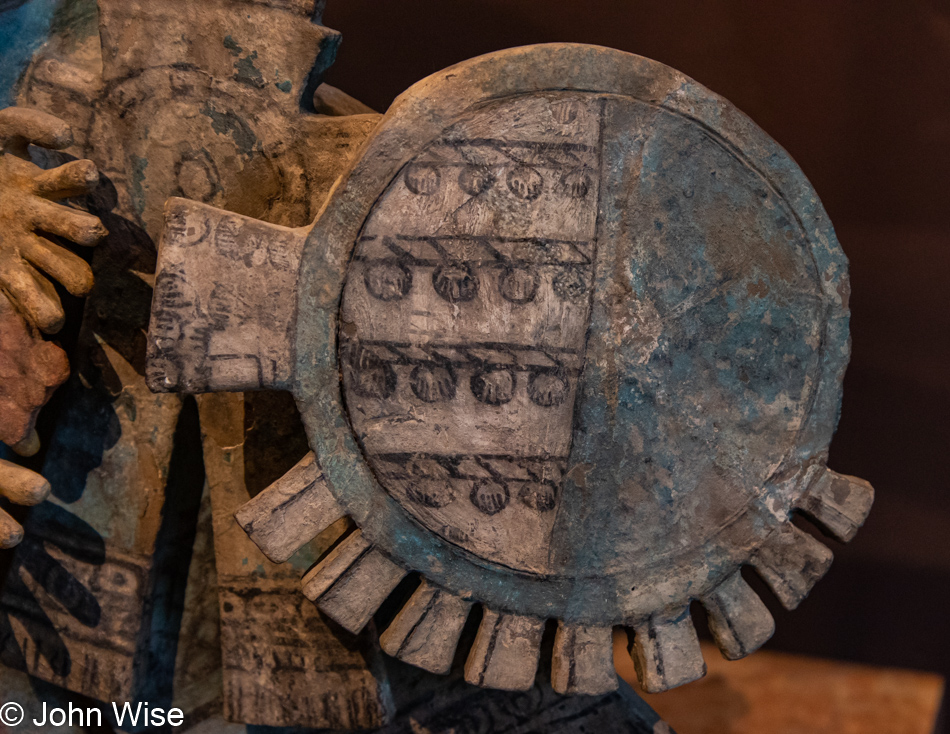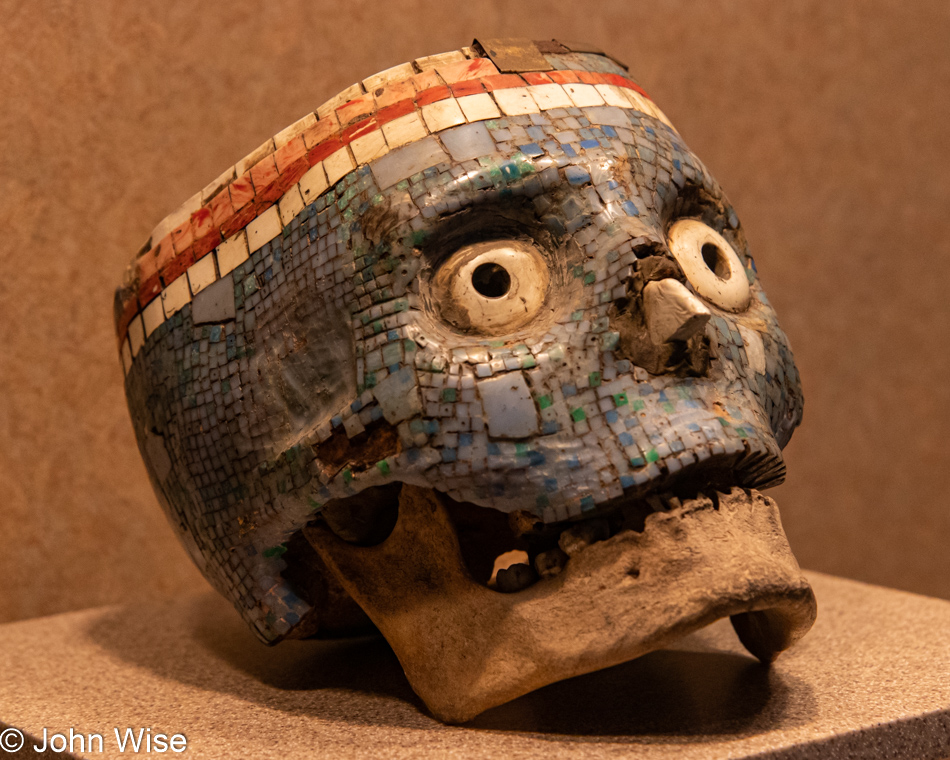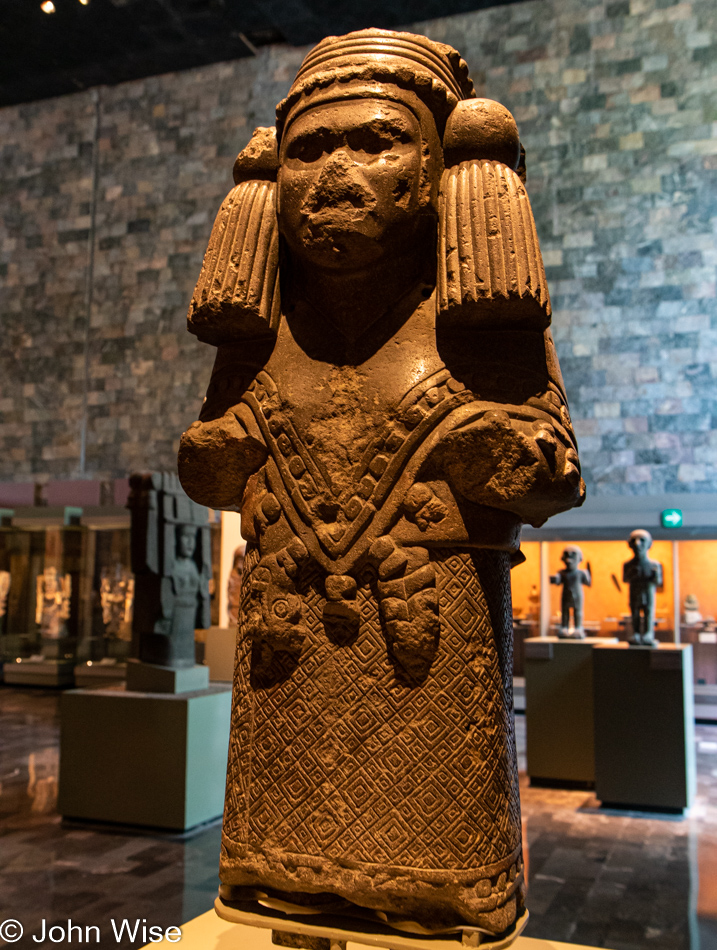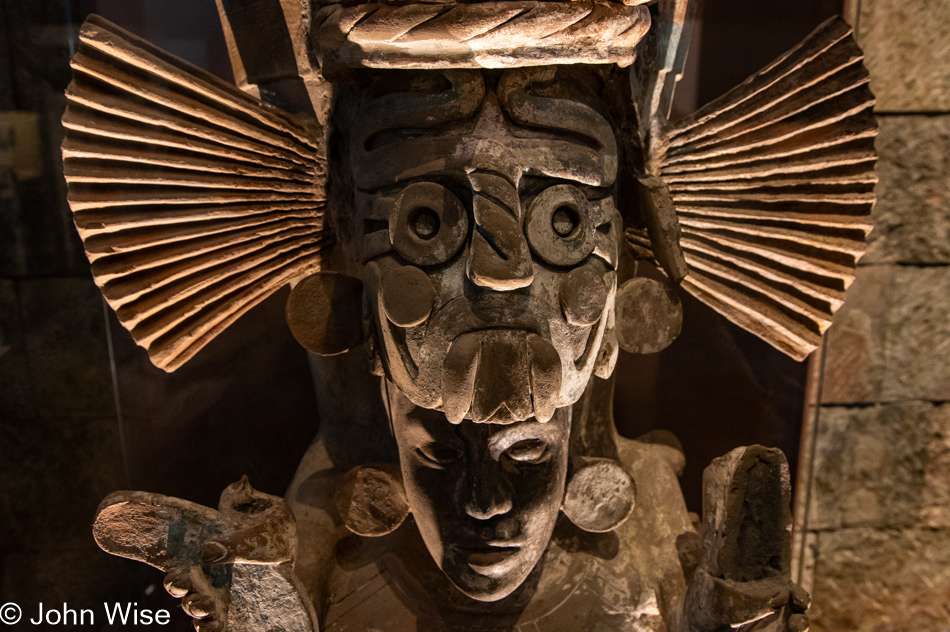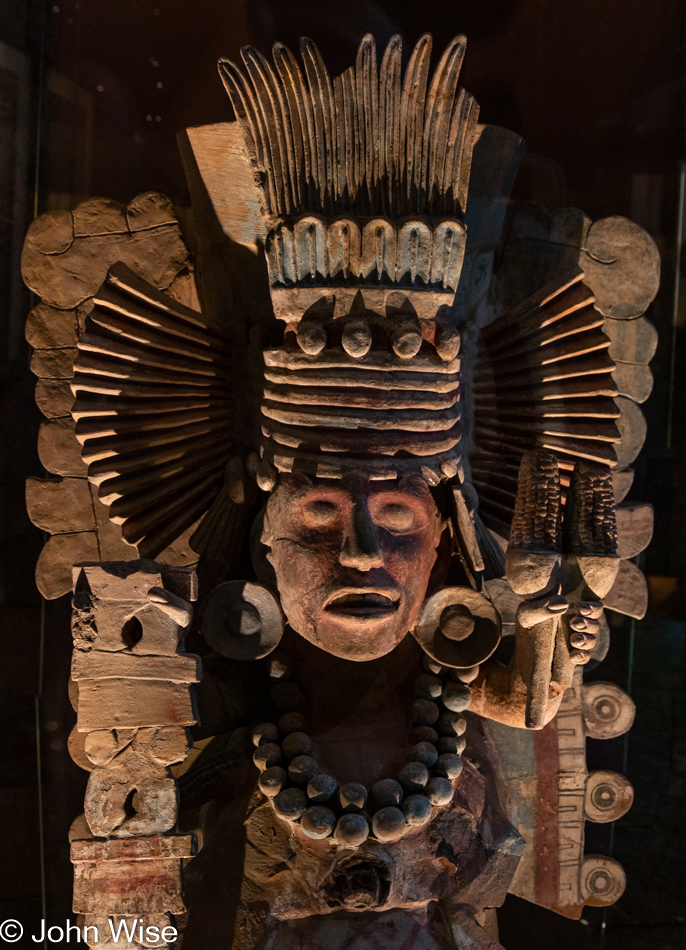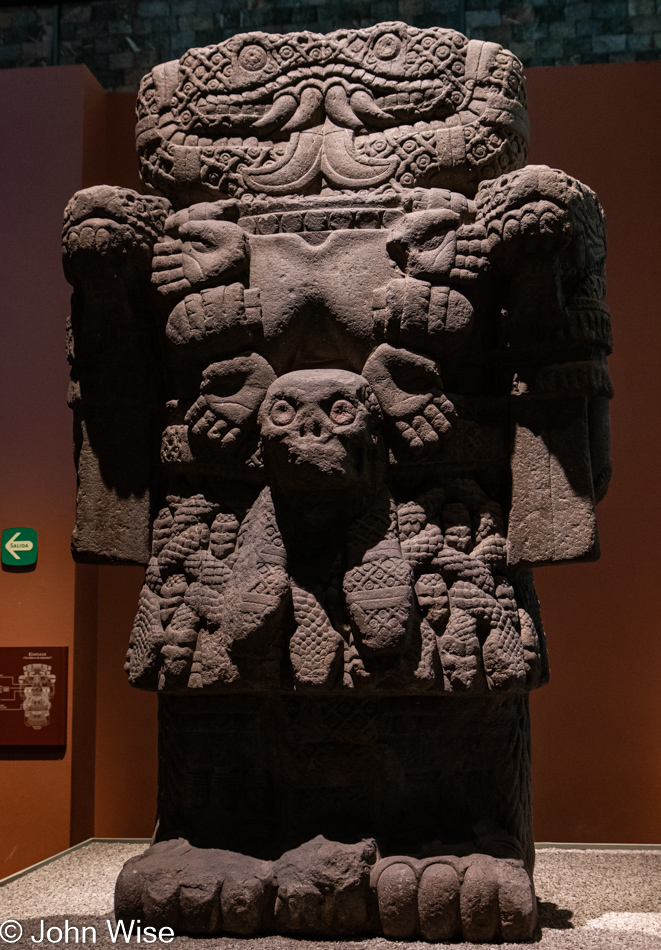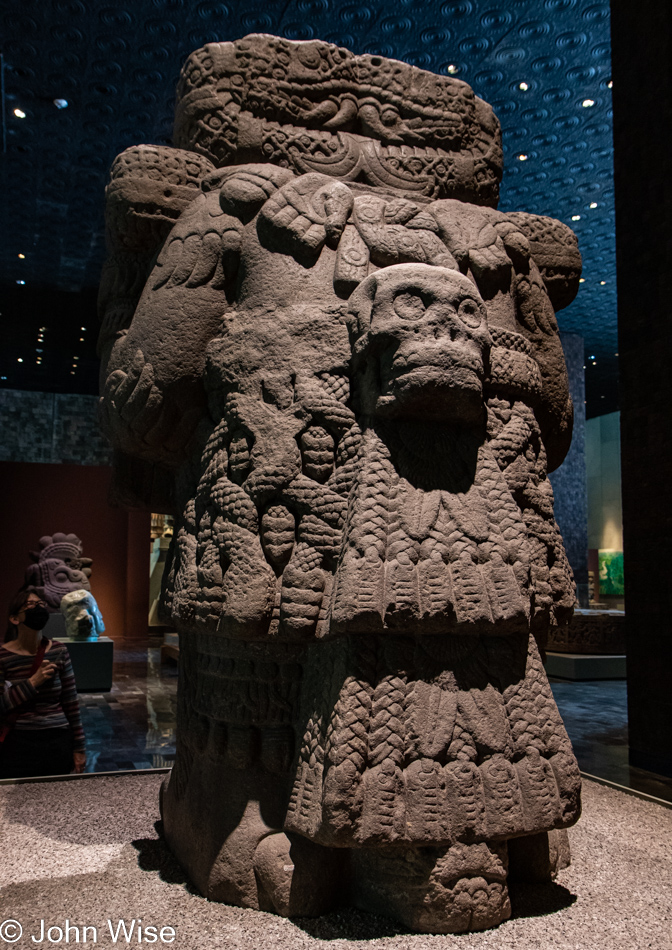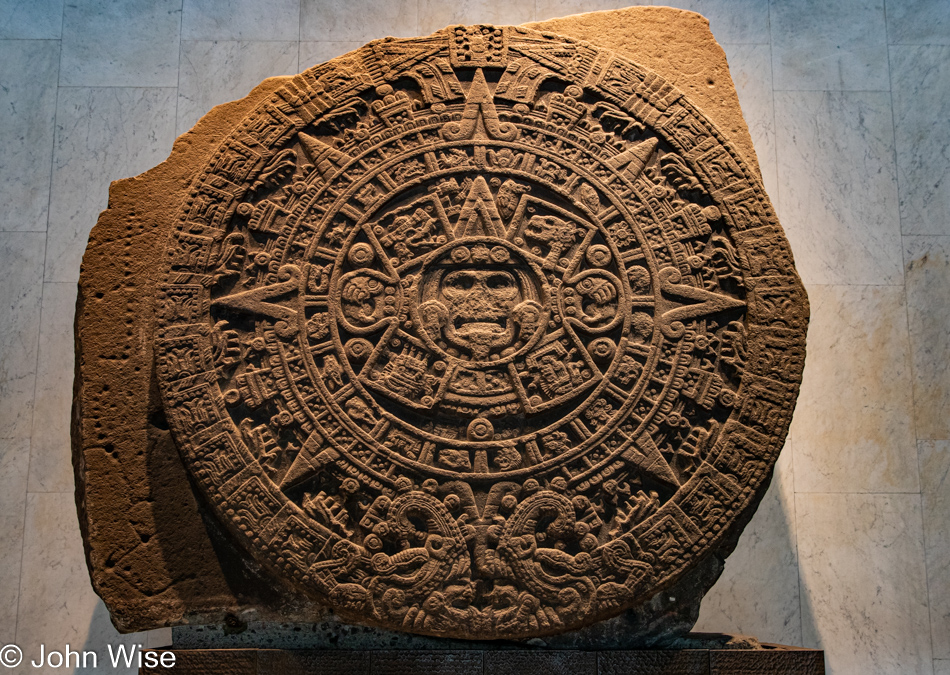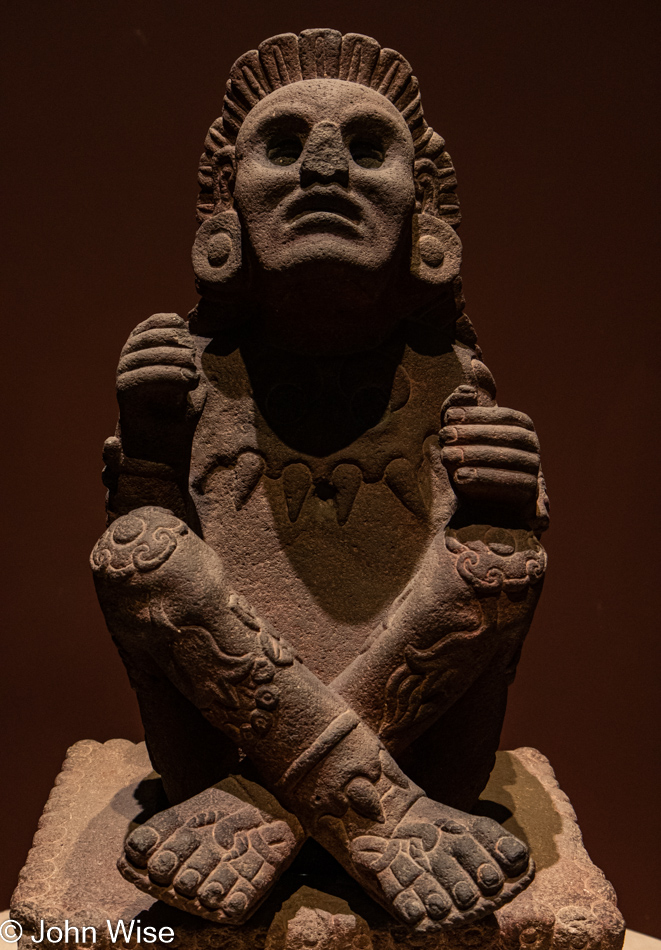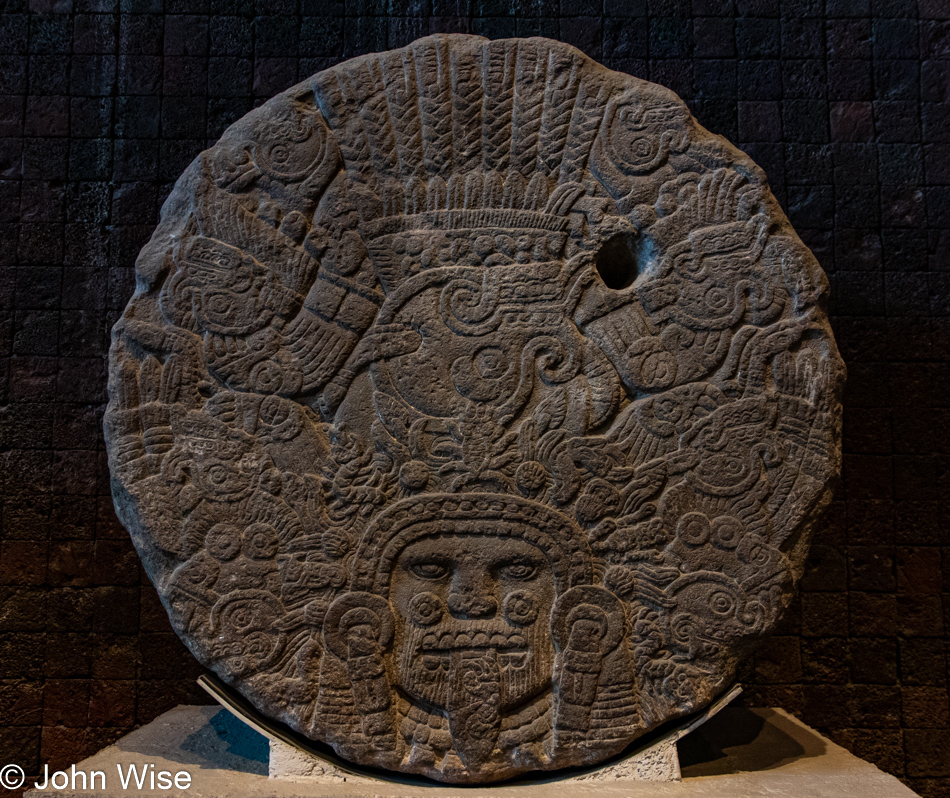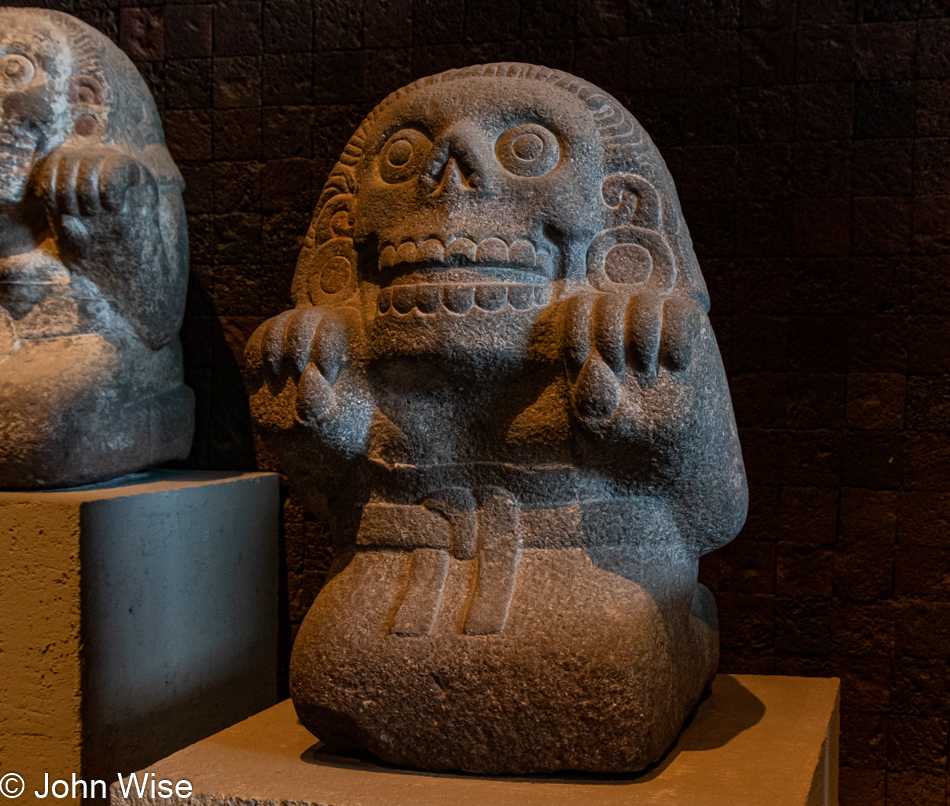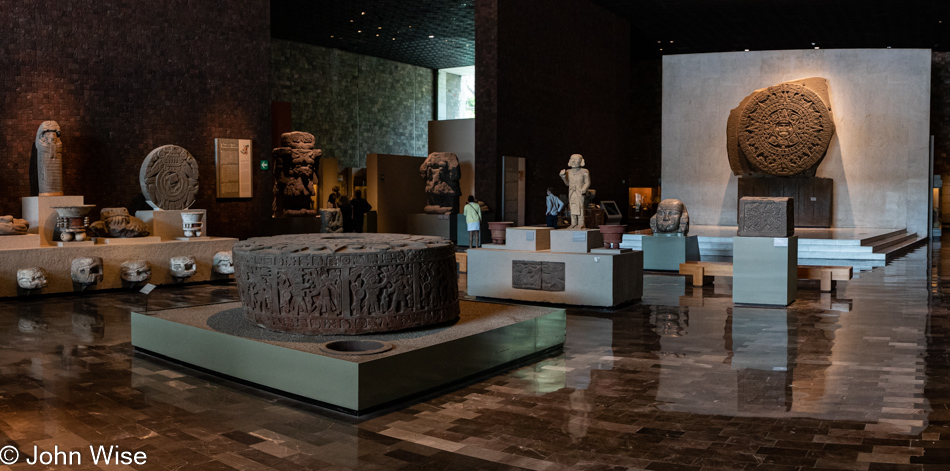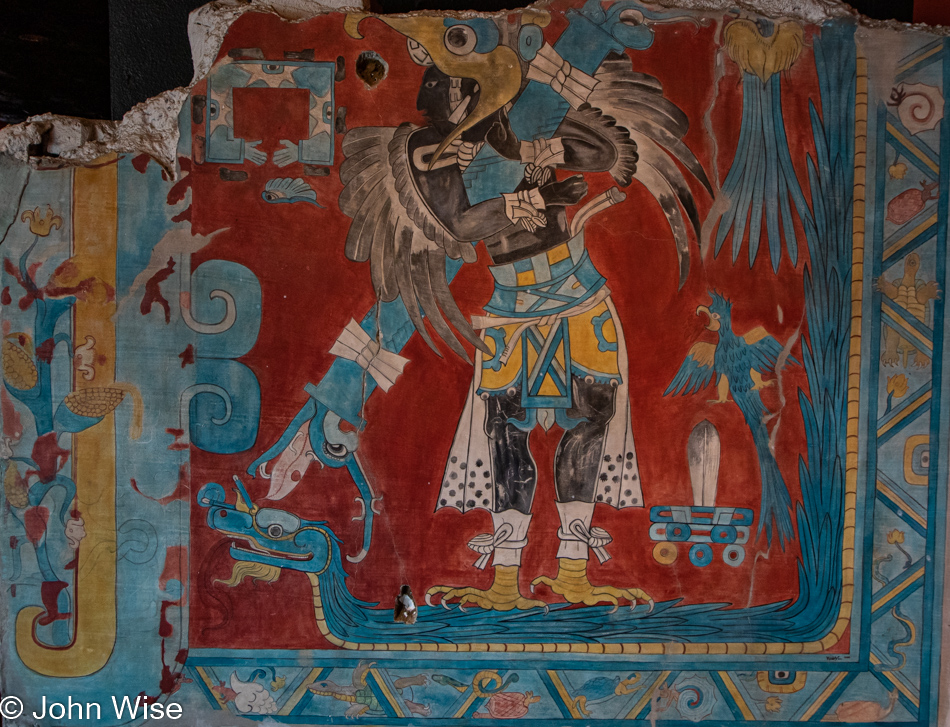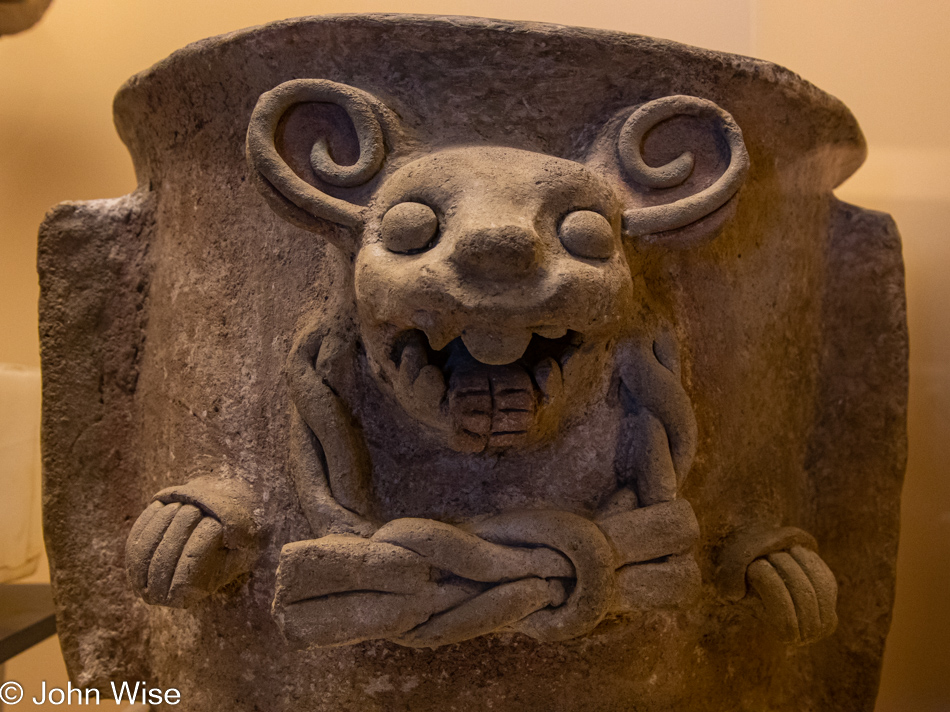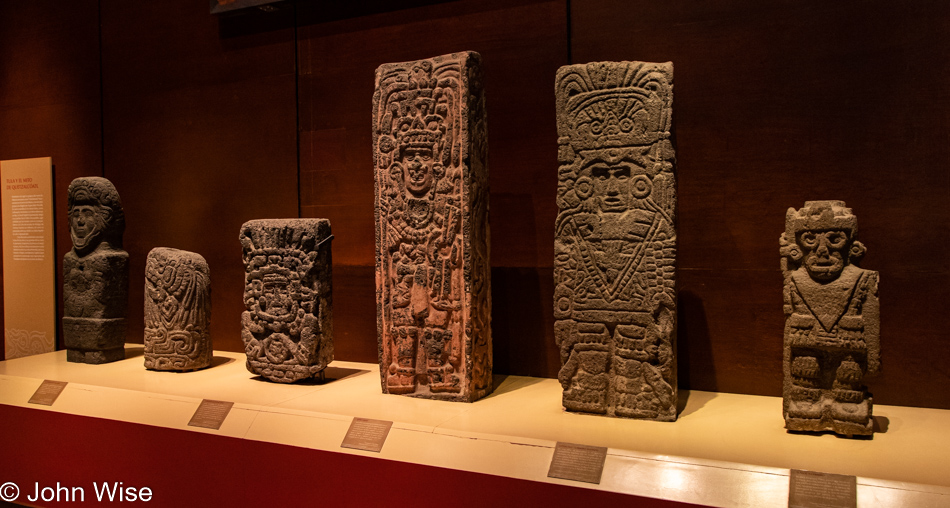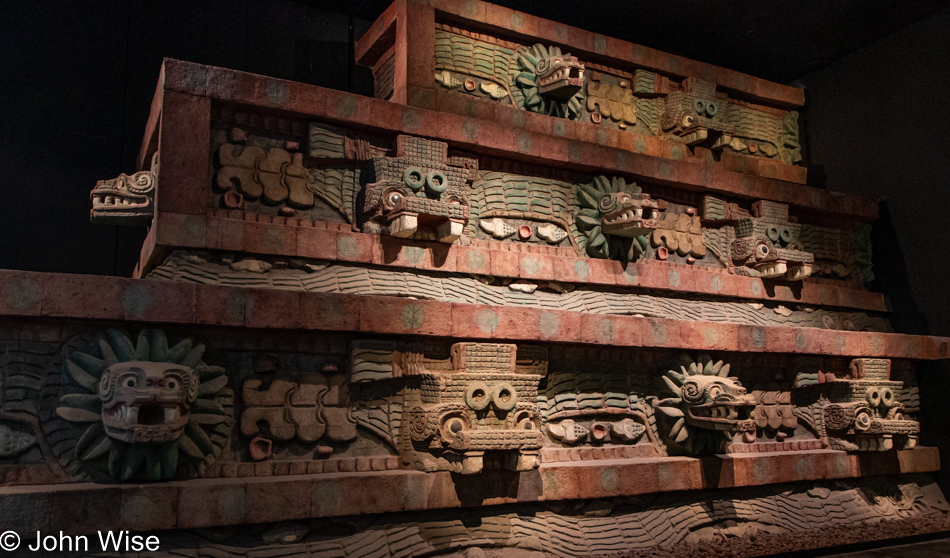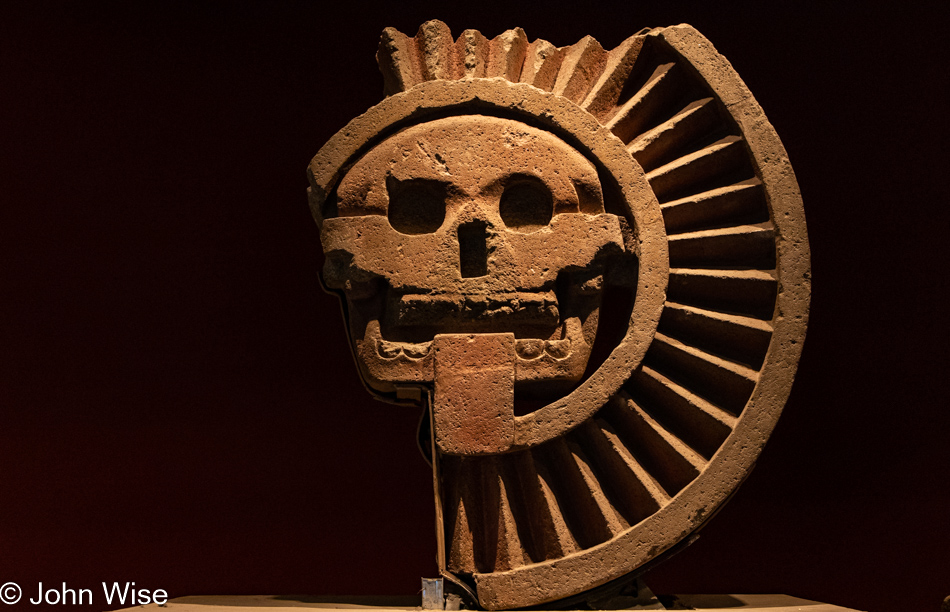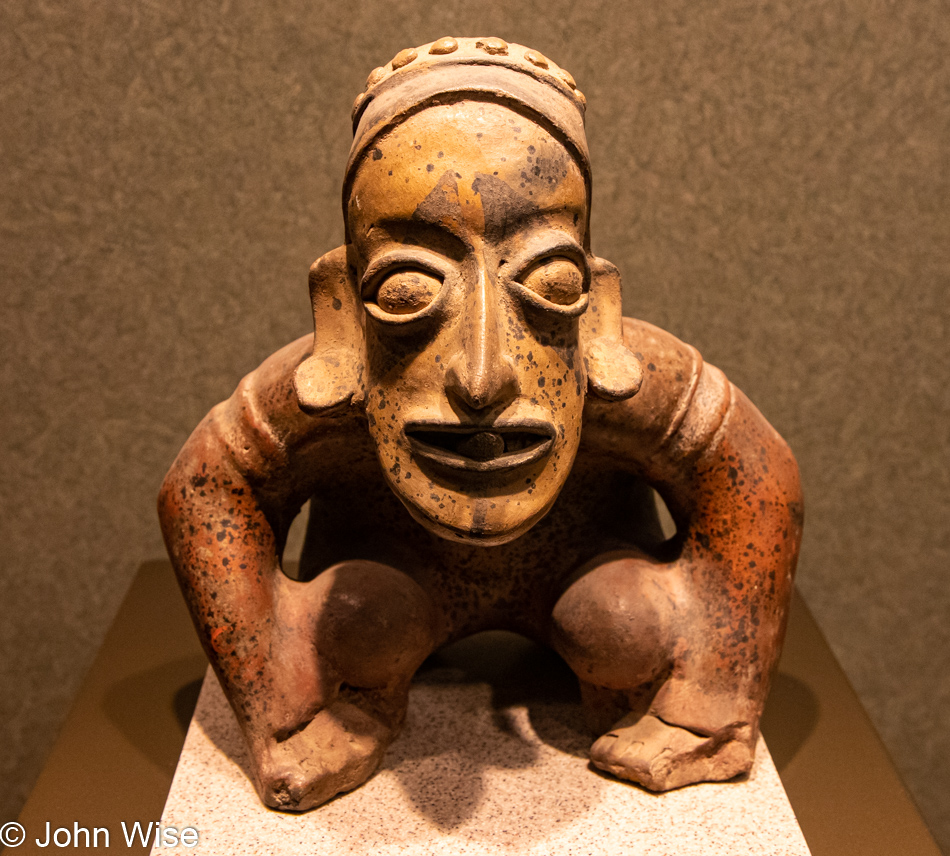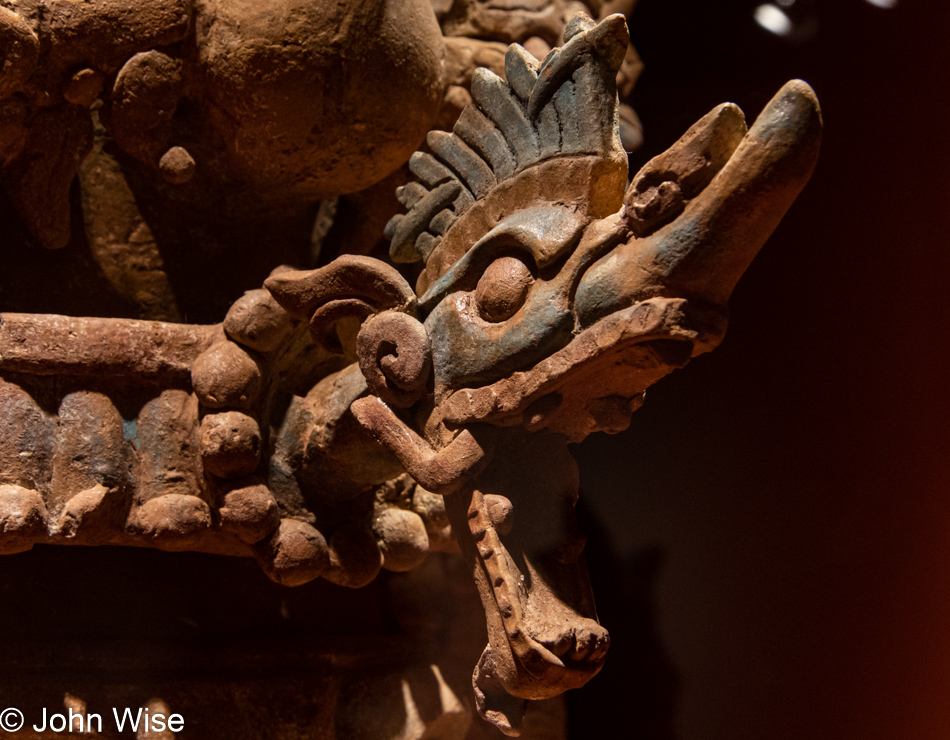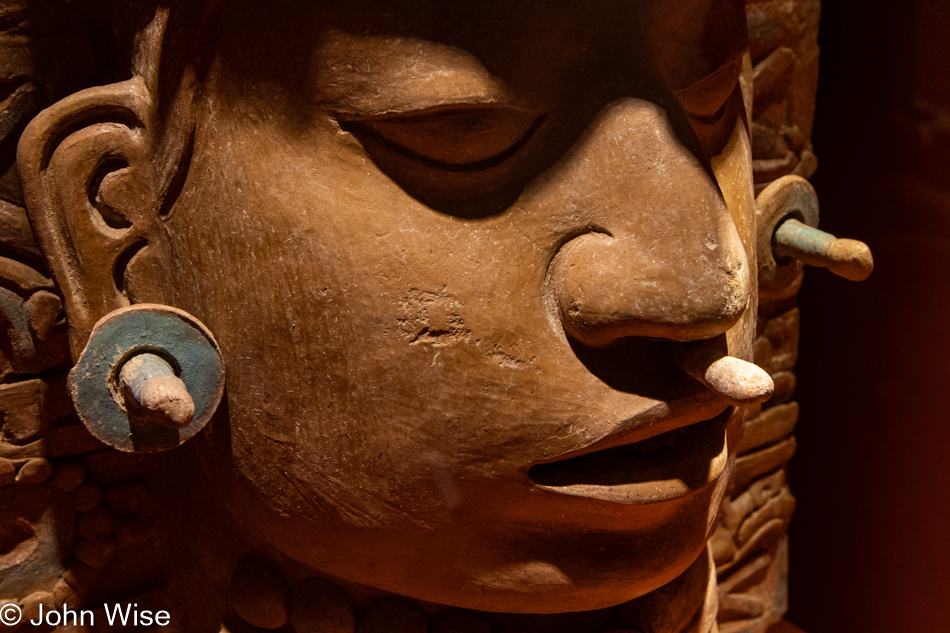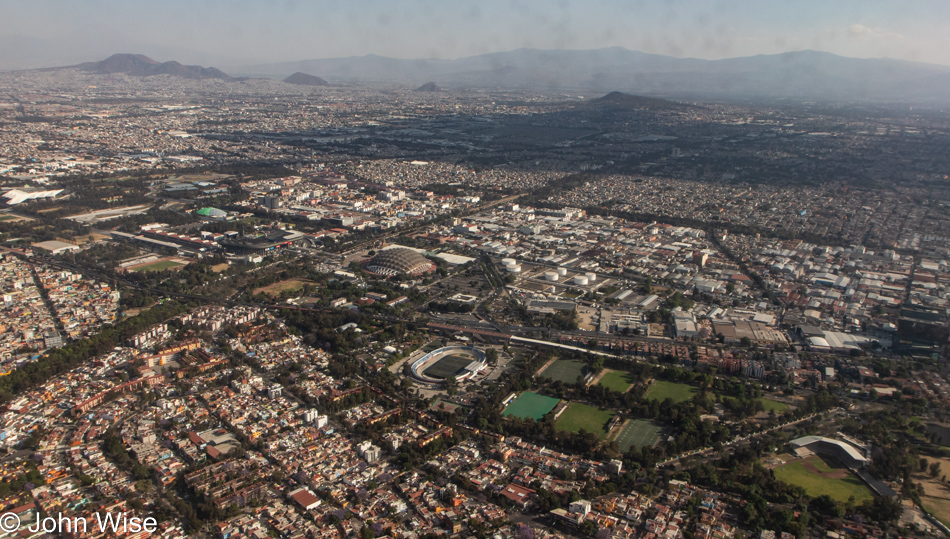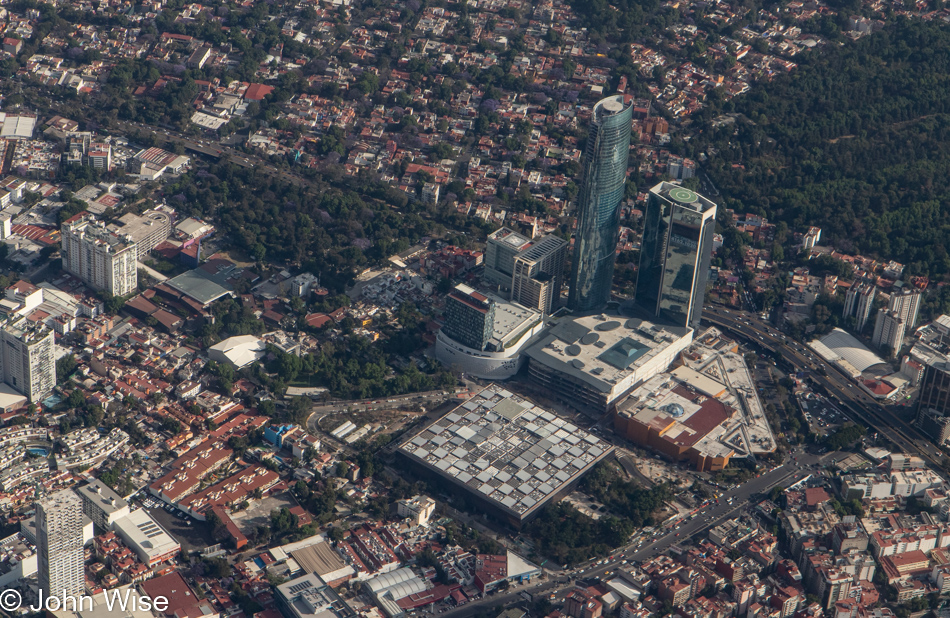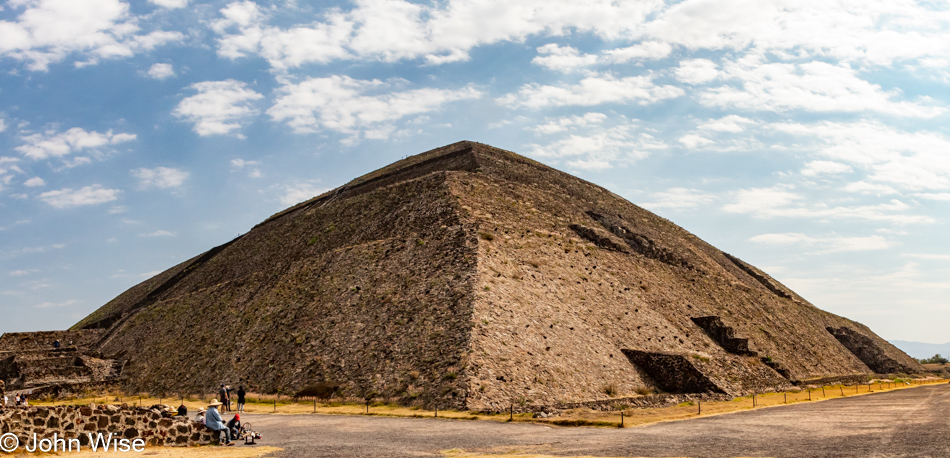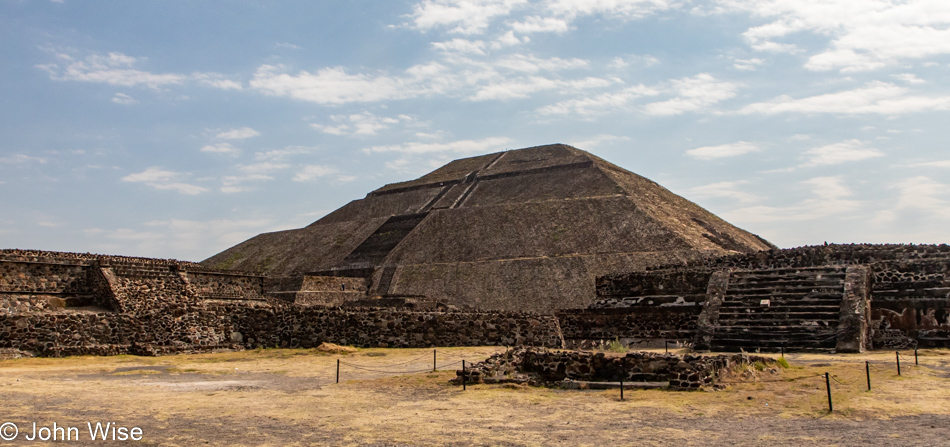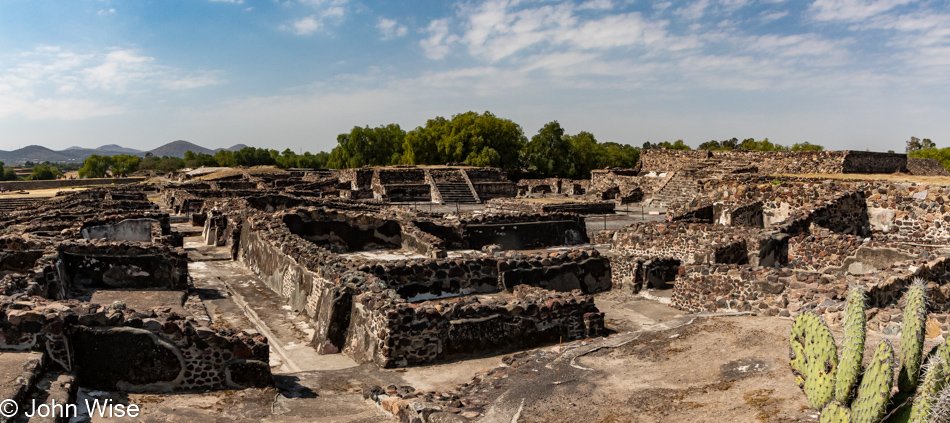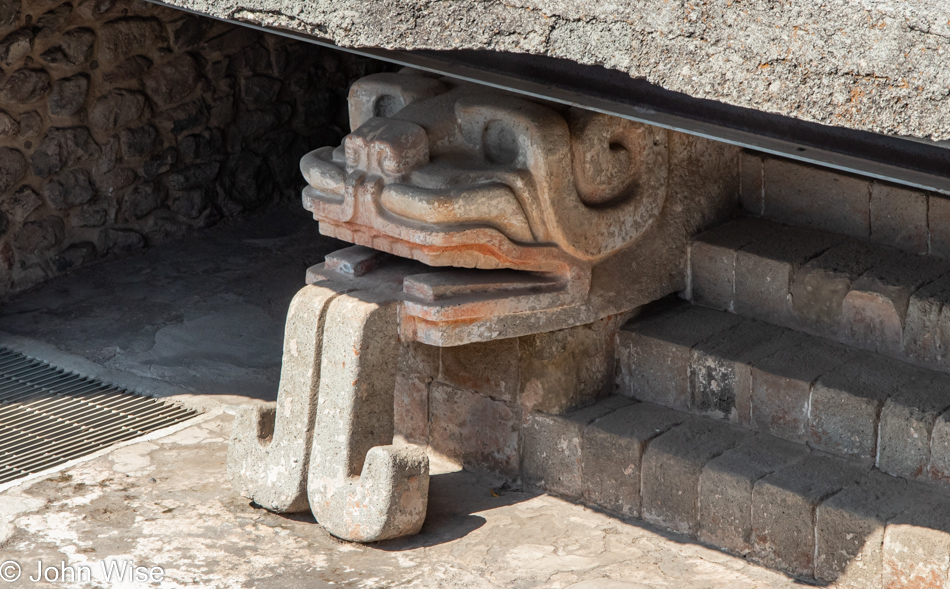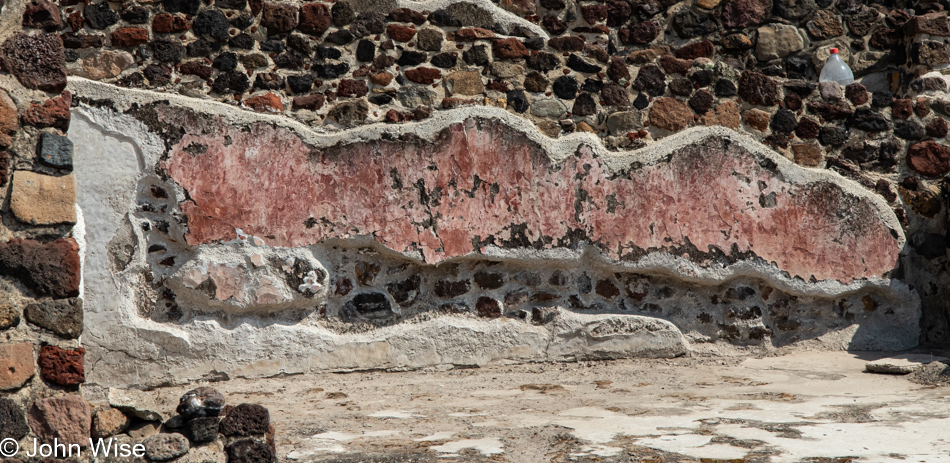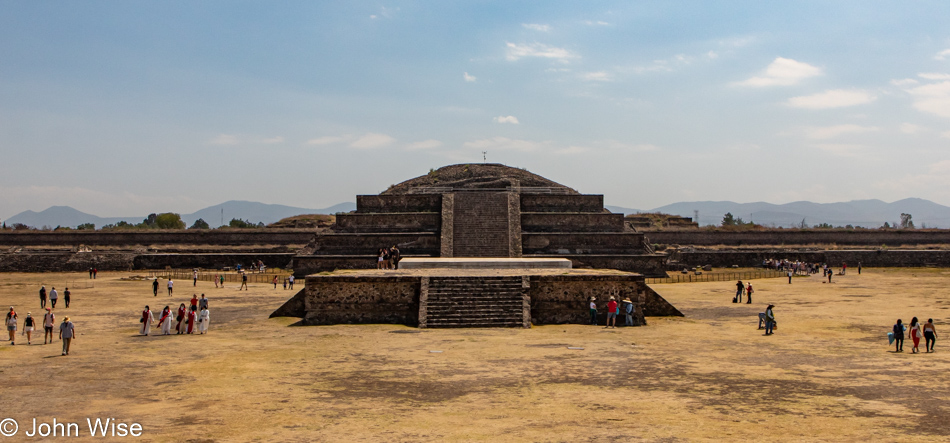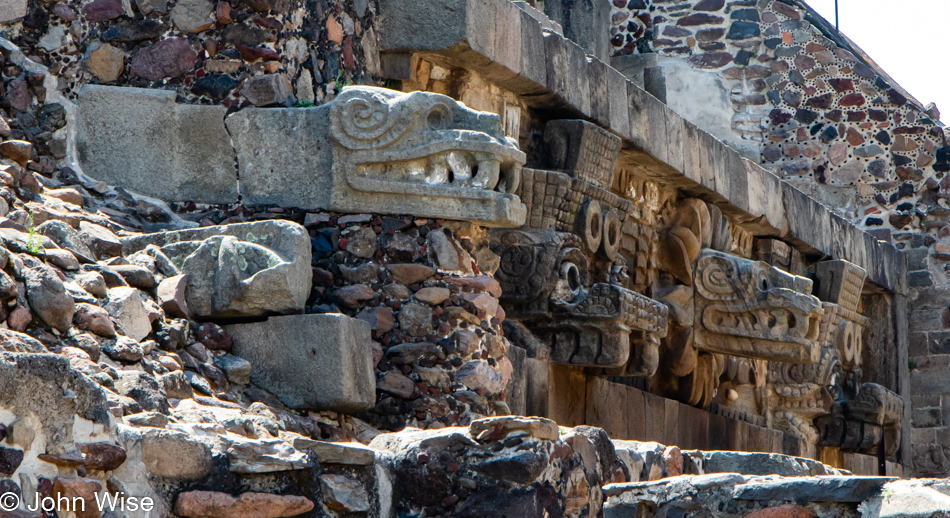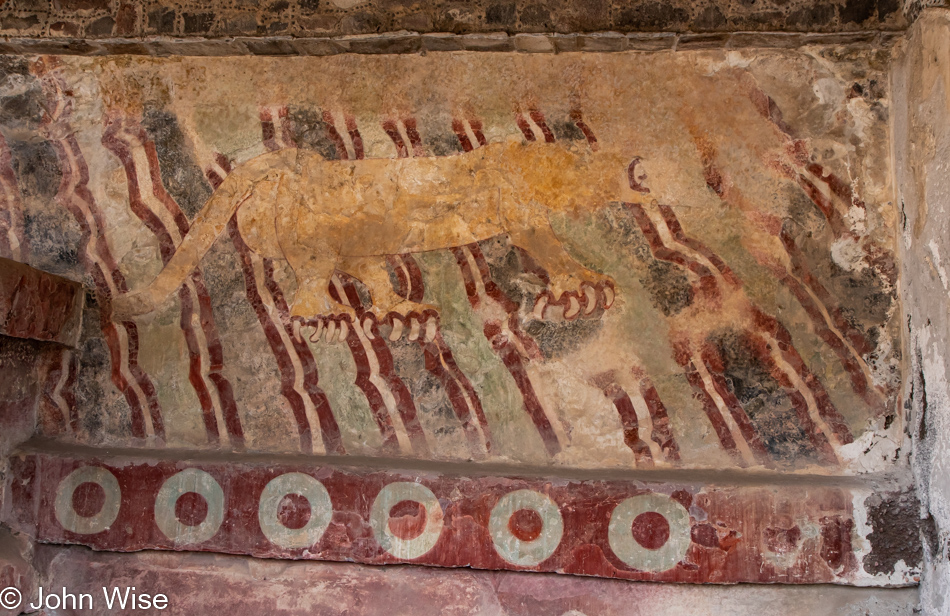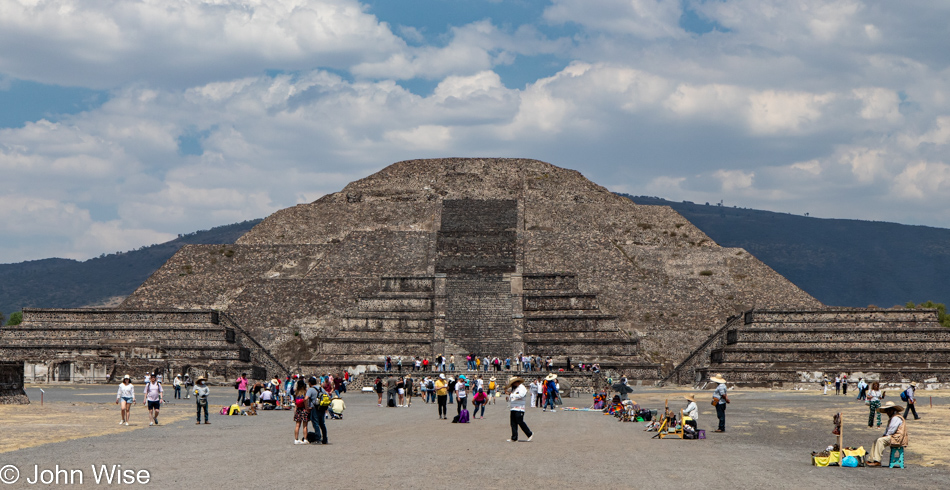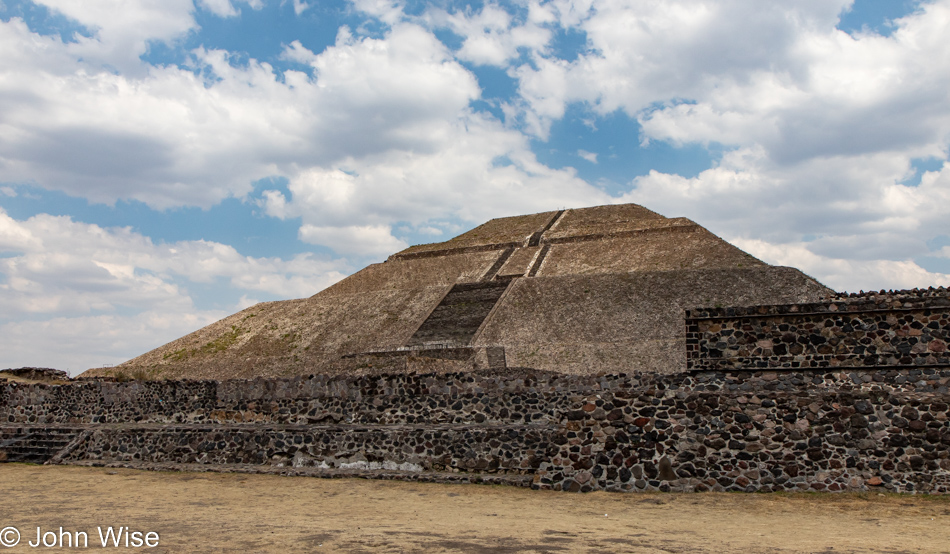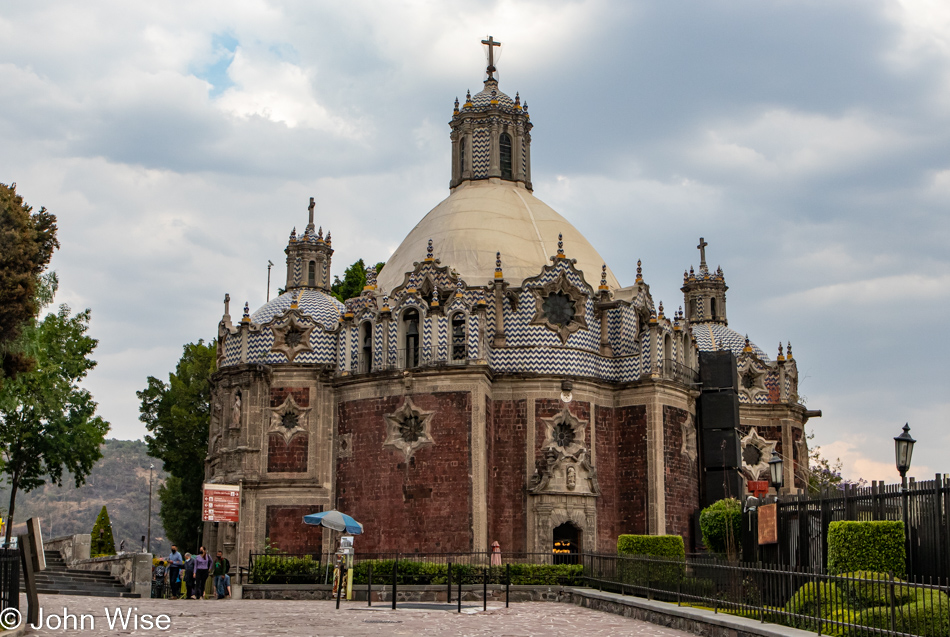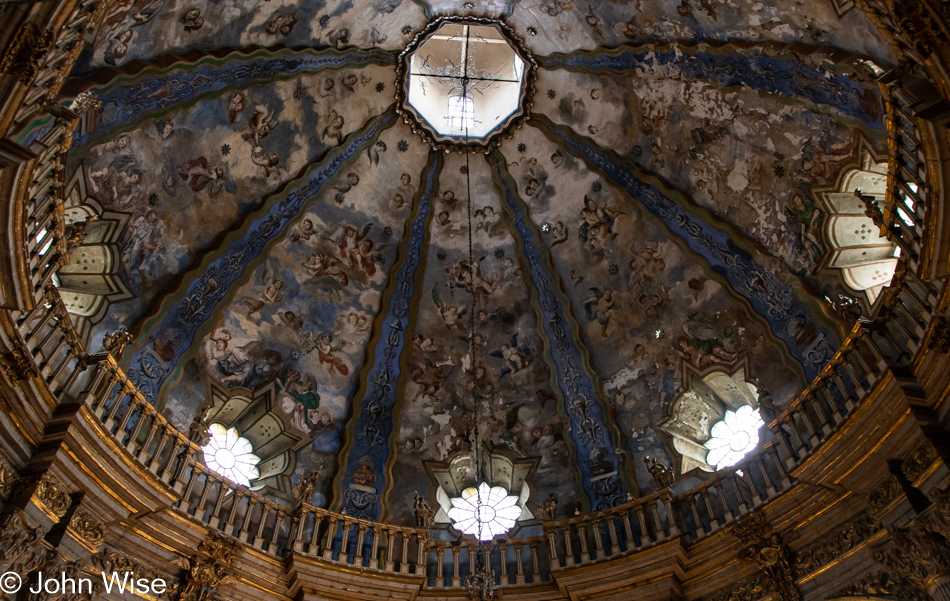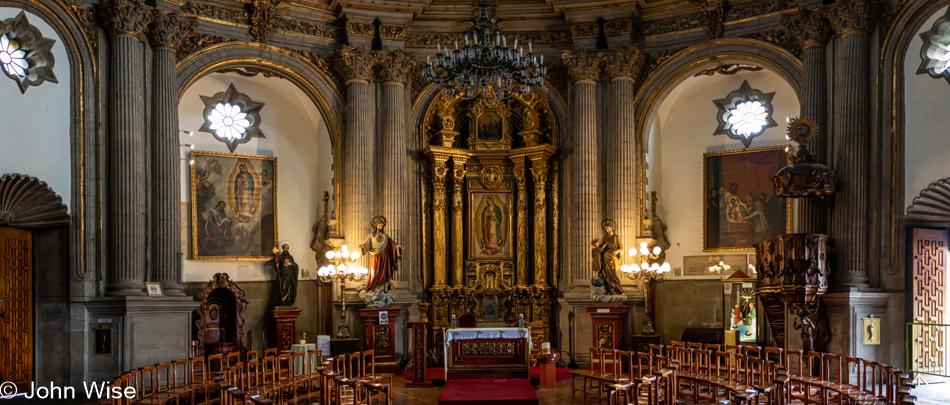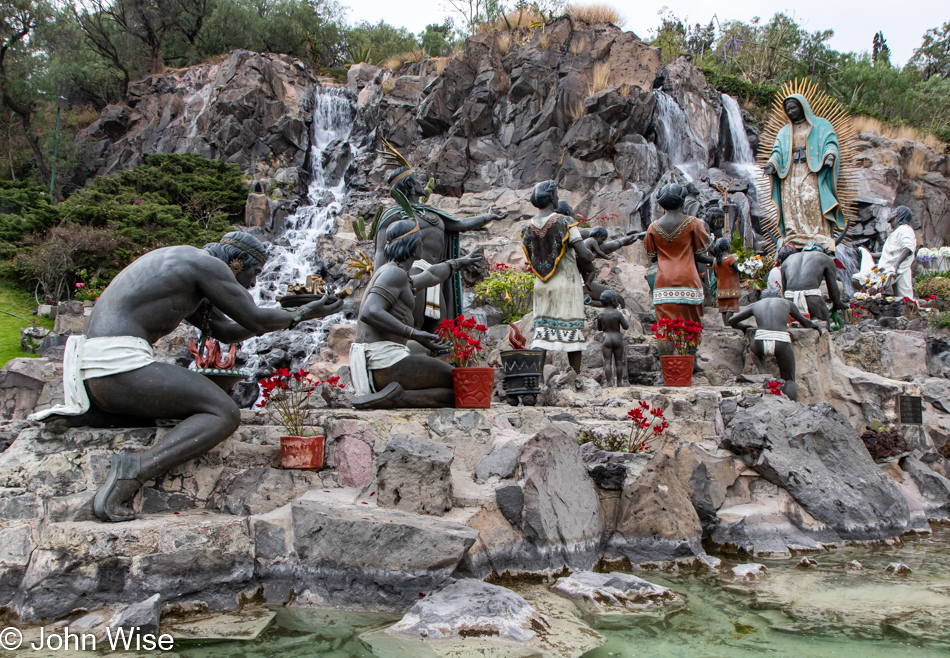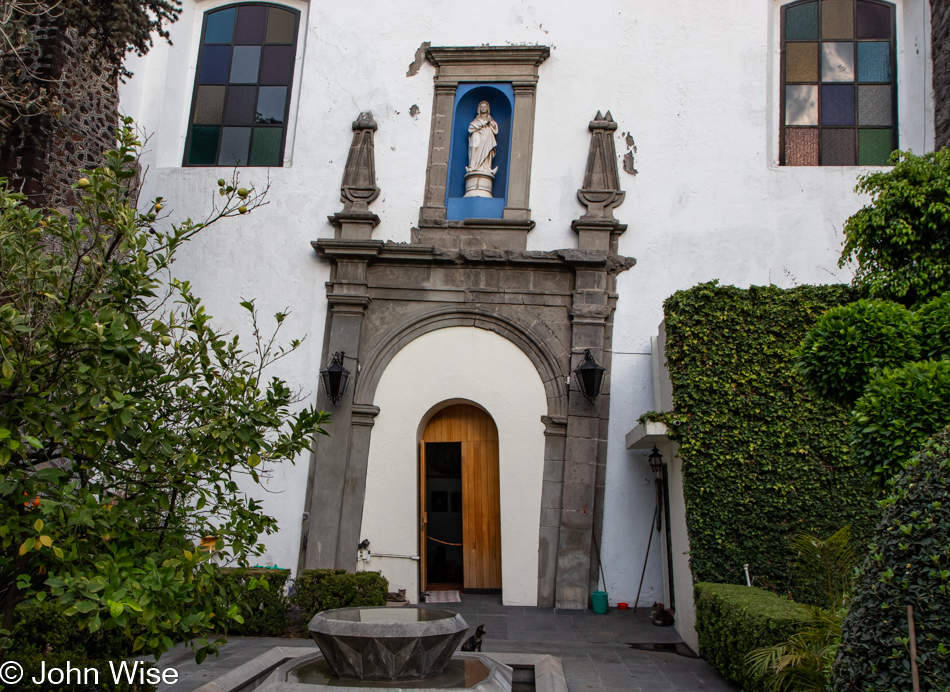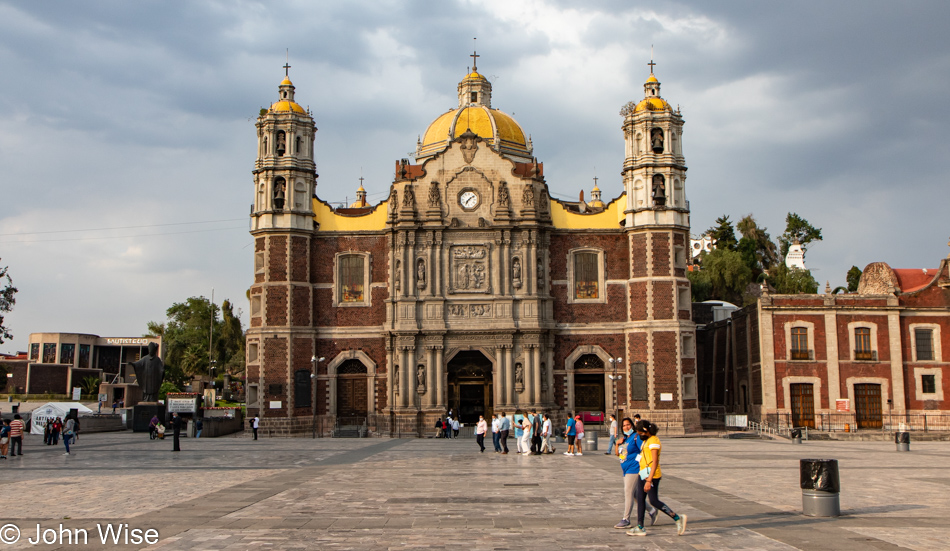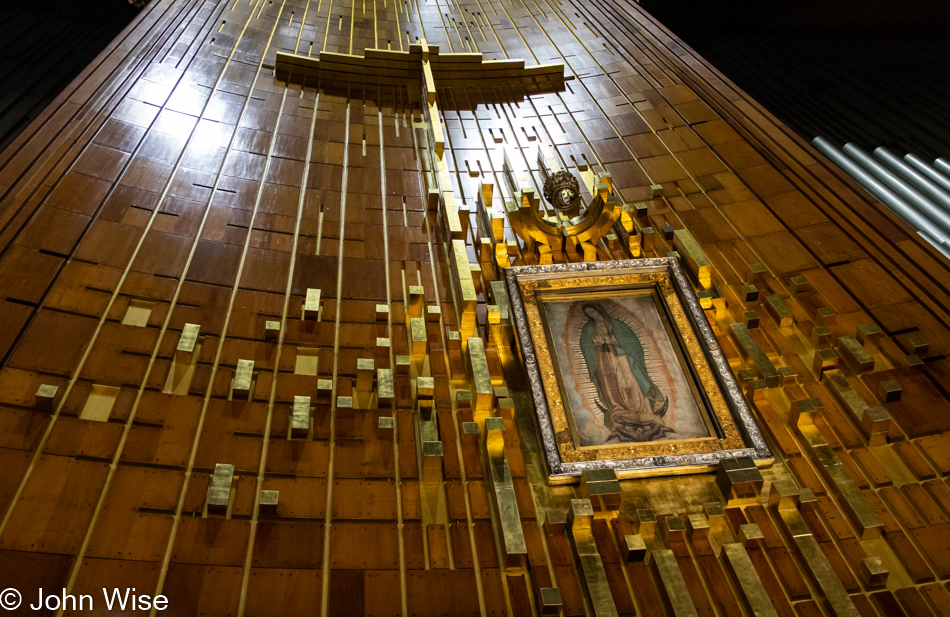
At breakfast, one of our traveling companions shared photos of a walk she had taken just prior to sitting down. Incredible views over the city were on offer, and we were enchanted, but she warned us there likely wasn’t enough time left to get it in this morning. With 45 minutes remaining before departing on another adventure within the adventure, Caroline and I thought if we hurried, we might make it to the church and hillside view. So, without a moment of dawdling, we bolted for the Iglesia de San Cristóbalito. Getting to the bottom of the hill only took about 8 or 9 minutes; now, we had to climb the 23 floors of steps up to the church, and we were already huffing and puffing.

The view grows more expansive with every step, but the air appears to thin up here at 7,218 feet above sea level.

Maybe going this high will be good enough? I just have to stop for another photo or so – this is my excuse, so I might catch my breath.

By this time, Caroline is asking if I’d like her to take the camera and snap some photos above. Just because I’m on the ground panting like a hyperventilating dog on a summer day doesn’t mean I’m not up for the challenge.

Only 30 steps remain, and then I can collapse and simply roll back to our hotel!

Score, the church doors are open! They were closed in the photos we saw earlier.

We didn’t have time to spare, somehow, we’d made it up those hundreds of stairs in a quick 5 minutes, but now we have to hurry back.

Yes, Caroline, I know we need to keep moving, but I just need this one extra photo.

Okay, this one too. The murals and street art in San Cristobal are incredible.
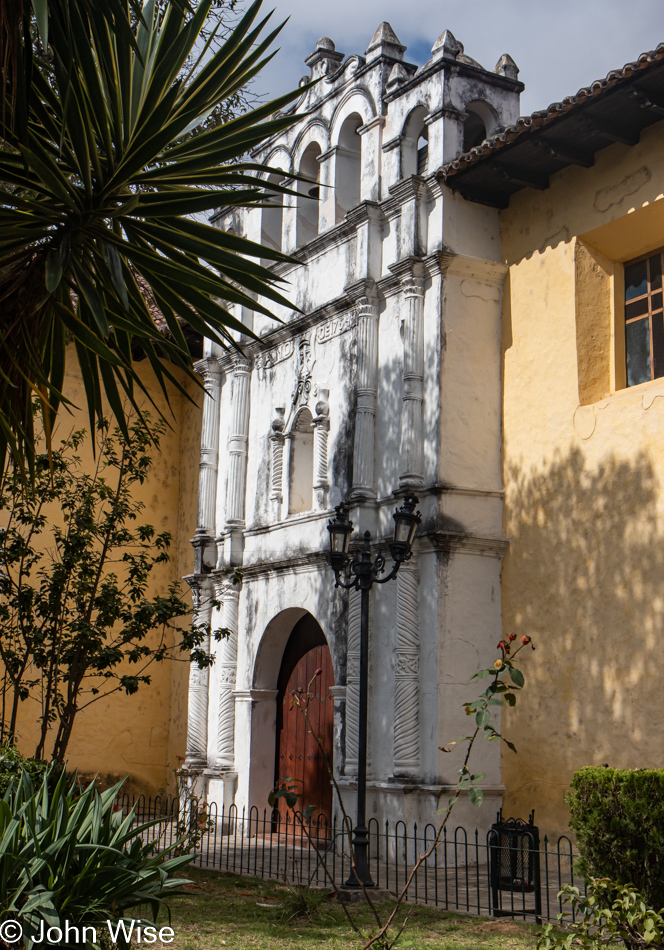
And this one of Iglesia del Carmen because who knows when we’ll pass through this way again. Just a few minutes later, we were back at our hotel with 2 minutes to spare.

After the group collected, we took off for a short stroll down the street. We are paying a visit to La Antigua – Galería de Arte & Café.

After entering through the courtyard of the café, we find ourselves in a room filled with the artwork of Tex (pronounced Tesh) of the ArTex Centro Cultural Independiente with the Monkey Men making an appearance. Tomorrow, we’ll be visiting the nearby community of Chamula, and at least part of our time out that way is to meet with Tex (Andreas) and his team.

This is Alberto López Gómez, the owner/creator of K’uxul Pok here in San Cristóbal, whose shop shares space with the café and gallery. This is possibly the design he’s proudest of that was created by him and his two sisters and was inspired by their mother. The style of dress is known as a ceremonial huipil.

Now, this is going to get tricky; you see, what you are looking at are Mayan motifs that have meaning, and while I have a list and order of things, I can’t easily point out where one thing begins and the next ends.
I’m pretty sure that the bottom row is the “lord of the earth,” but where the corn blossoms and growing corn change is uncertain. And what about the small snakes my list says are there?

Alberto is from the village of Santa María Magdalena Aldama, north of San Cris. Moving south was a bit of a requirement as he bucked convention, choosing to work the loom instead of the fields which is the tradition of men in that area. His efforts have rewarded him with a trip to Japan to show his work, and while he was supposed to attend and speak at the New York Fashion Week, the pandemic may have derailed that.

Continuing the list of elements woven on the edges of this huipil where we left off with bats, corn blossoms, and growing corn, we arrive at small snakes, corn seeds, crosses, small stars, caterpillars, feathered snakes, mountains, snake track, lord of the universe, and snake track again.

Here, Gabriela helps Alberto show us another one of his ceremonial huipiles.

By the end of our trip next week and after seeing many a designer’s work, there’s no denying that Alberto is advancing the quality and visibility of Mayan textile craftsmanship.

This is our group sans me, and while we were all taken with Alberto’s work, I’d like to point out that the weavers working under the name Kolaval also have a presence in the shop and warranted Caroline buying one of their pieces too.

Caroline is wearing one of the huipiles she bought from Alberto López Gómez; there’s also a blue one coming back with us.
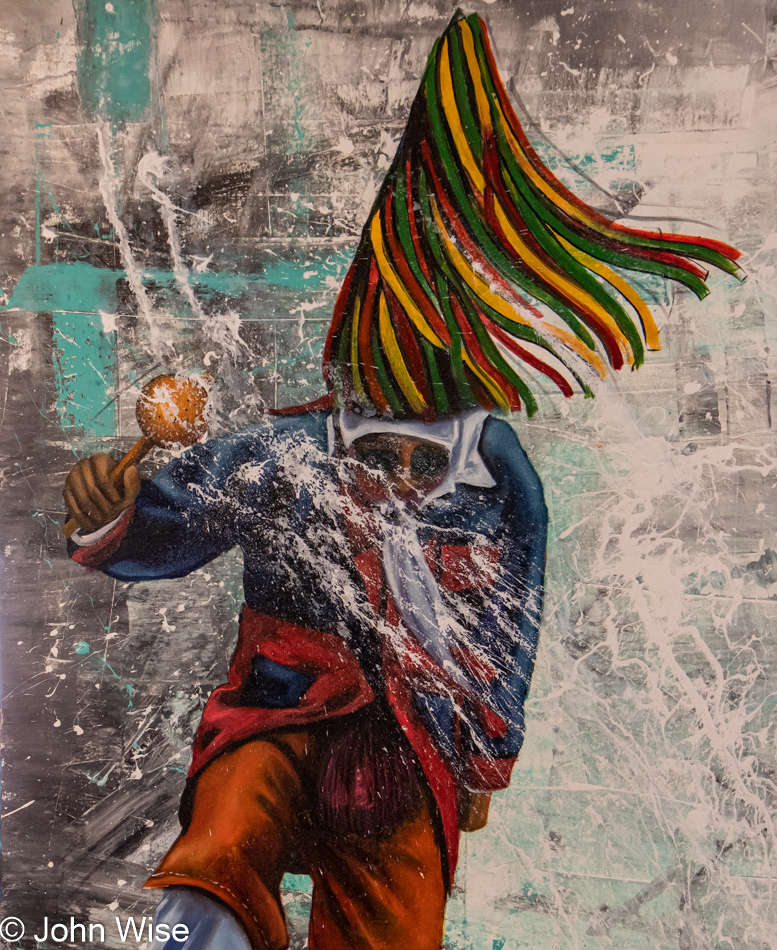
I’m really falling in love with the art of Tex and his Monkey Men.

It doesn’t happen often that I become so smitten with a contemporary artist but this motif that is so alien to me is also resonating in ways that are talking to me. I won’t look at the price as this trip is already pricey, and I’m sure paintings of this intensity are beyond my budget.

On the left is our fellow traveler Susie, who gave us the tip for this morning’s church visit; next is obviously Alberto, then our organizer Norma Schafer on his left, and guide Gabriela Fuentes.

Taller Leñateros is Mexico’s first and only Tzotzil Maya bookbinding workshop, and it’s where we are right now.

They make paper the traditional way using local plant fibers as well as incorporating recycled cardboard and paper.

After soaking the various materials, they are chopped and blended into a slurry to release their cellulose. A scoop of that is dumped into a fine mesh form that is the size of the desired sheet of paper. Some water will drip out, and more of it will be sponged up in order to leave the fibers behind. That is then turned out on a metal sheet.

The object on the plate sure looks a lot like paper. Our mini-workshop demonstration is being led by the owner of the shop, Javier Balderas. Papermaking has a long history here in Chiapas.

The storage room holds many beautiful sheets of handmade paper, often decorated with flowers and sometimes imprinted with baskets or other items, leaving interesting surface structures.

Here, we see a sheet of thicker paper impregnated with flowers and imprinted with a basket.

An example of a floral paper not using dyes or inks but using actual flowers.

Because I love Mayan art. By the way, did you notice that the guy on the left appears to be an amputee?

If Mayans of 2,000 years ago had motorcycles, this is exactly how I think the glyphs on temples and pyramids would have looked.

Synchronicity is everywhere; just yesterday, we were visiting Na Bolom, which is where café Jardín del Jaguar is located, and we had our first hot chocolate. Caroline bought a few things, including a tote bag with the Taller Leñateros logo on it, the one with the Mayan motorcyclist.

The formal side of our touring day is over, but that doesn’t mean we have to depart company from our most gracious of guides, namely Gaby. She’s volunteered to direct us to a nearby market where we hope to purchase some copal resin. Since we were in Mexico City, we’ve been curious about what this ancient incense smells like.

After a fairly short walk, we find ourselves entering the periphery of Mercado Castillo Tielemans. While we might have found it easily enough, we would have been hopelessly lost in the maze of vendors surrounding the main market. There are many different focal points in the market, such as wooden tools, clothing, food, candles, and incense. On the way to the second floor (the place for candles and incense), we also ran into another seller of ixtel net bags, which Caroline couldn’t resist. She bought her biggest bag so far.

To say there’s an abundance of fresh fruit in the little we’ve seen of Mexico would be an understatement; it’s everywhere. From street vendors selling fruit waters, our breakfast table, fruit, and veggie stands dotting streets and corners, to the markets where multiple vendors are offering all sorts of vibrantly colored fruits.

250g of copal = $200 pesos or about 9 ounces for $10 U.S. This should last us a while.

There are different grades of copal, and while I wish we could have taken a sample of each along with some candles, too, we are too aware of the limitations we are self-imposing on ourselves regarding how much stuff we want to drag back to the US.
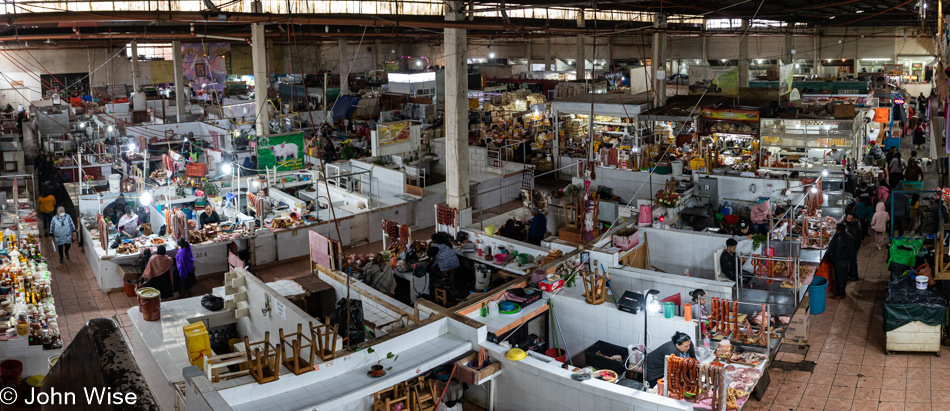
Like other open-air meat markets I’ve visited in the past, you smell it before you reach it. Tamp down your disdain for uncommon smells; this is not the world you might know. Our own sterilized environments where all aromas aside from cooking foods and perfumes have been banished are often not the norm. I couldn’t find a sign of refrigeration on our walk down among those vendors, but I did find a lot of intriguing things I can only imagine what they might be like.

If keeping fresh fish at home is impossible, try a stack of dried and salted fish. There were other dried and salted products here that weren’t fish, but learning exactly what they were wasn’t something that was about to be easily known.

While this would never fly in the United States, many people in third-world countries have been eating meat left out during the day without refrigeration, and they are doing fine. To be honest, if I lived here, I’d have to be jumping over my own conditioning to arrive at the point that I could walk in here and buy half a kilo of that steak without at least a bit of hesitation.

These six very patient and well-behaved dogs are just chilling in the market, waiting for one of the meat sellers to throw them a scrap.
The day after our visit, a shooting took place here at the Mercado. From what I came to understand, the people who rent these stalls are trying to squeeze the vendors out so they can modernize the facility, such as adding refrigeration. The problem is that the small operators are afraid they’ll be priced out of here and lose their livelihood, and it was one of those men who pulled a gun on someone trying to persuade the guy that there’d be no new rental agreement. I supposed out of desperation; he felt so threatened that he needed to show the negotiator how serious things were for his future and his family’s financial security.

I find it amazing how many variations there are to form dough into bread, humorous even. Fluorescent icing makes these stand out, adding appeal to the buyers, while in America, a plastic bag with an attractive logo hiding the spongy loaf of whiteness holds the magic of what the market wants. Meanwhile, in Germany, they offer danger-bread loaded with sharp edges able to slice the interior of fragile mouths unaccustomed to bread that bites back. In France, the bread arrives pre-buttered, and in Japan, you’ll never have to bother with crusts. Sorry, but I can’t help myself; bread in Italy is boiled and covered in garlic and oil or a tomato sauce and eaten with a fork and spoon; they call it pasta.

If space exists, it is taken or moved into at the next opportunity, as the need to sell a little something every day is imperative. Average daily wages here are only $264 pesos, about $13 U.S. or $1.63 per hour. The power of tipping someone just $60 pesos or $3 can make an impact. Knowing this, I feel better about leaving the cleaning women at our hotel the $200 pesos a day we’ve been giving and have a greater appreciation for those who risk all to land in America with the hopes of finding any kind of work in order to be able to send even $20 a day back to Mexico where $400 pesos change lives.

Okay, after a solid week of being in Mexico with a mind fully blown by the magnitude of experiences, I need some downtime. So, to that end, we took the camera back to the room, dropped it off, and went out for dinner with no concern for documenting a thing or trying to process what we were seeing. Time to just chill out.


